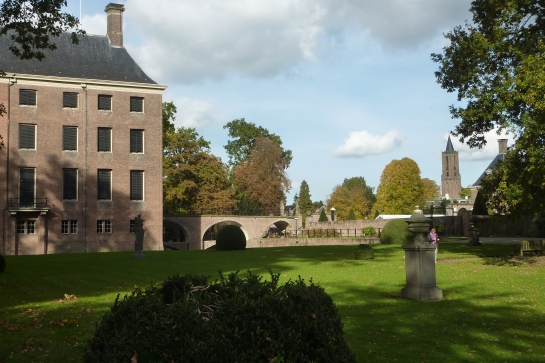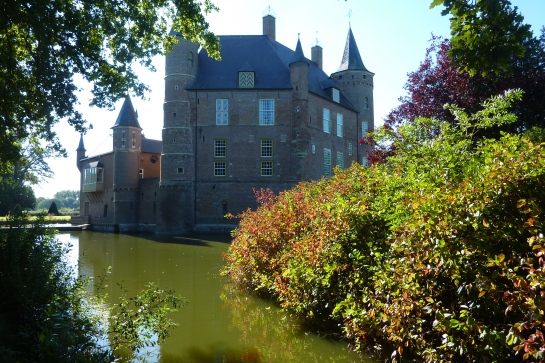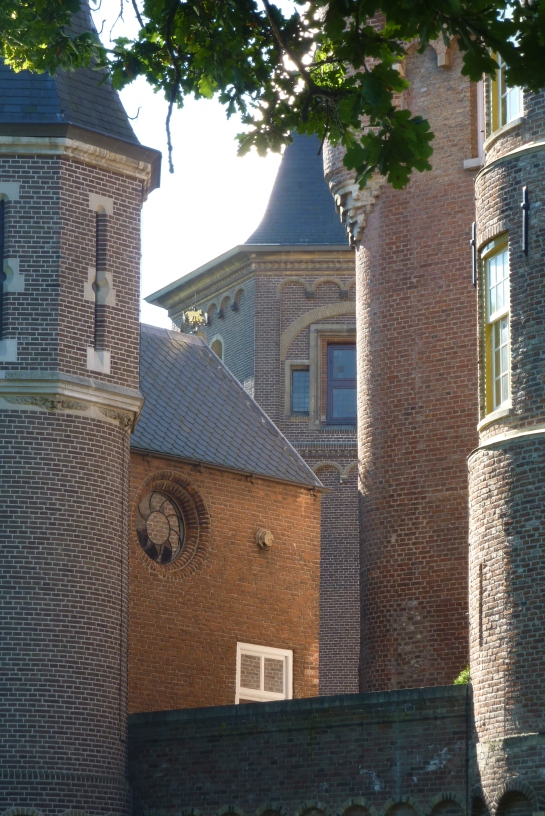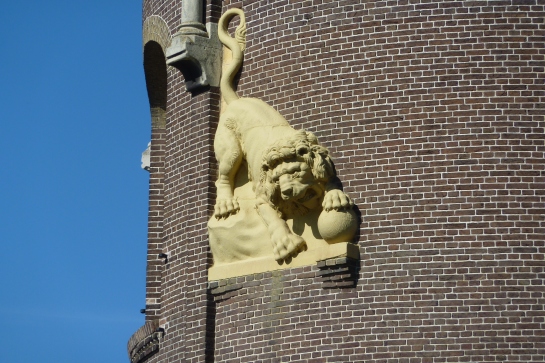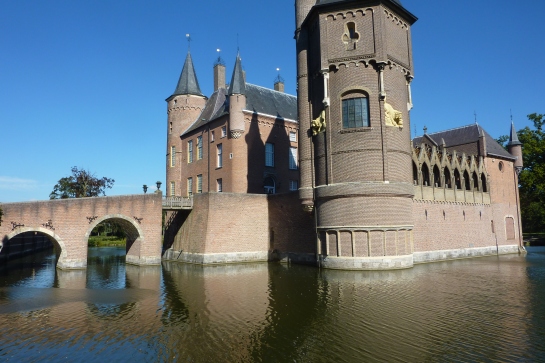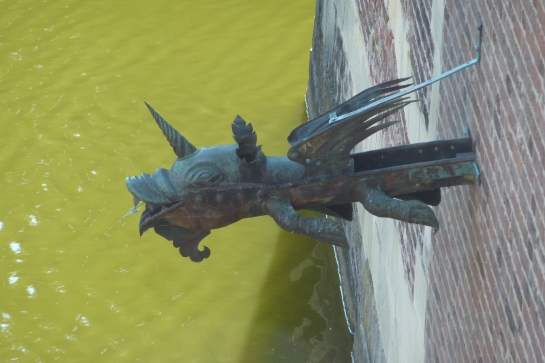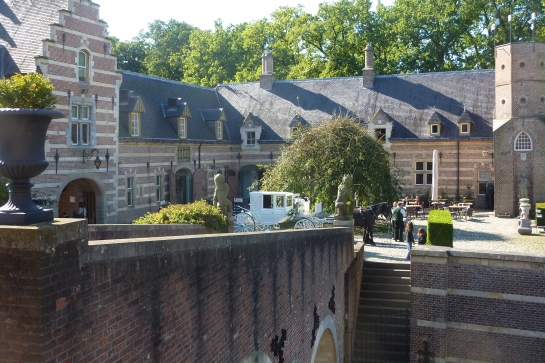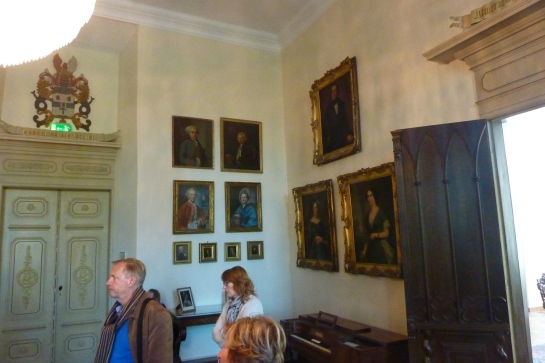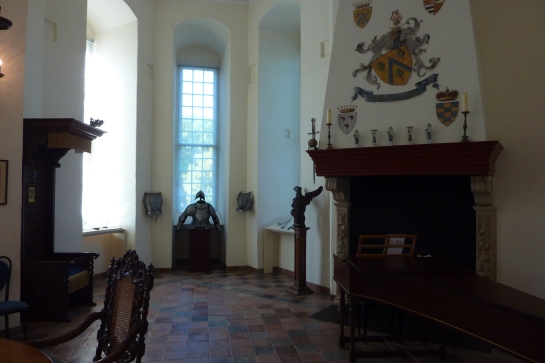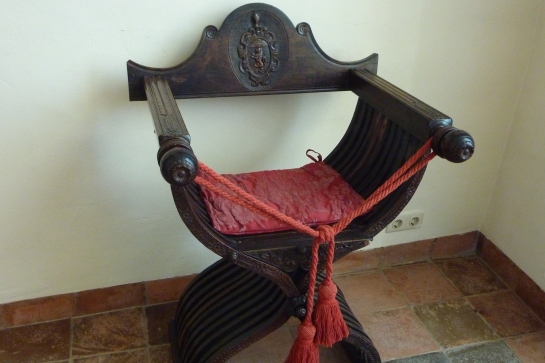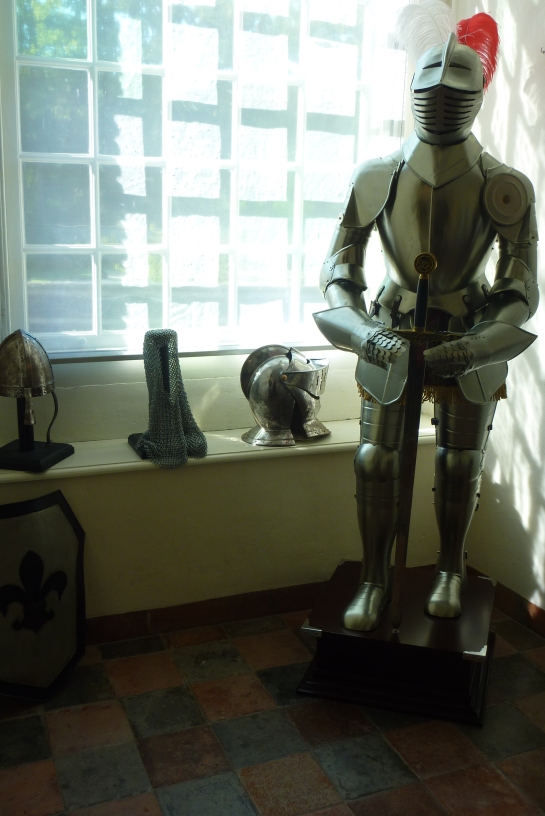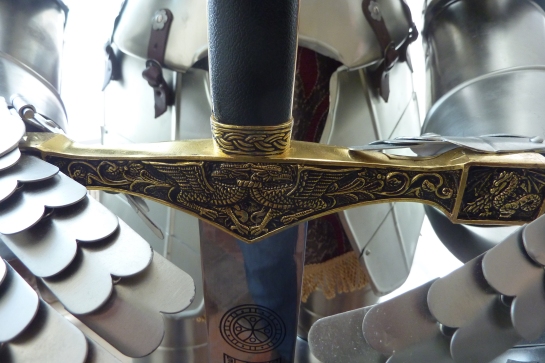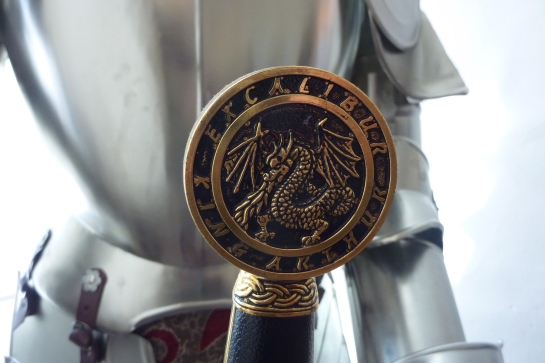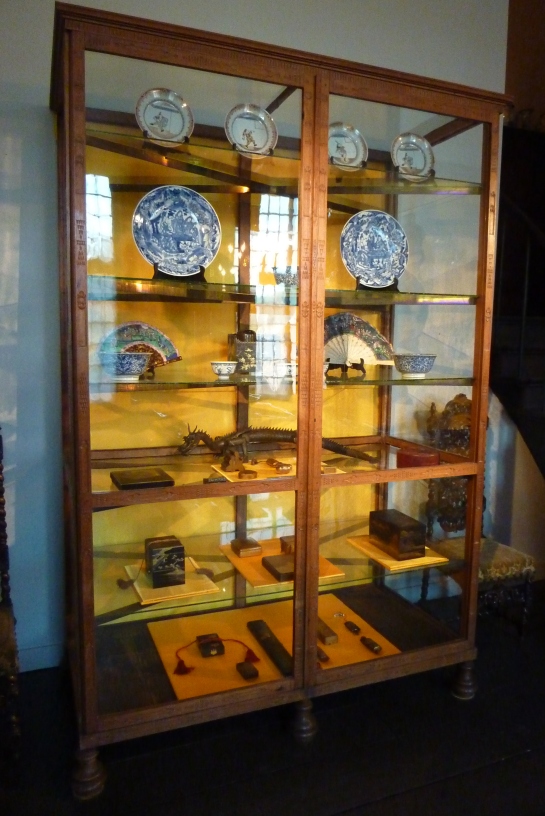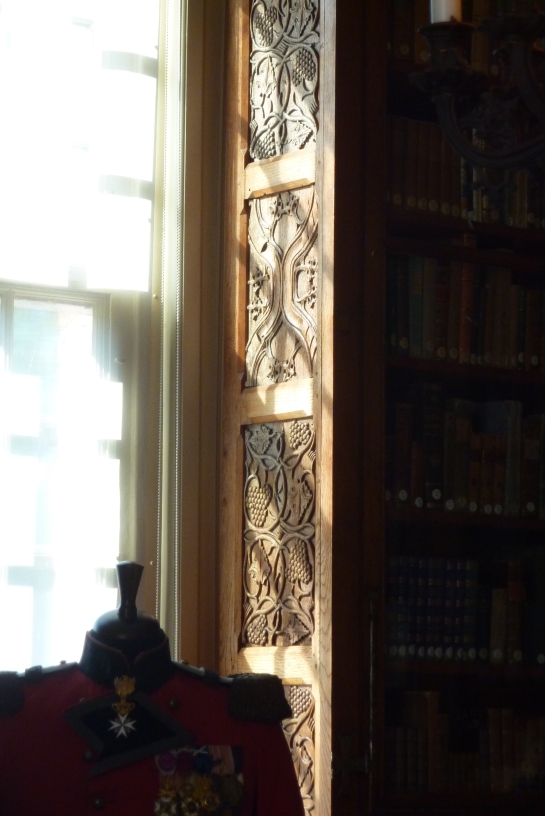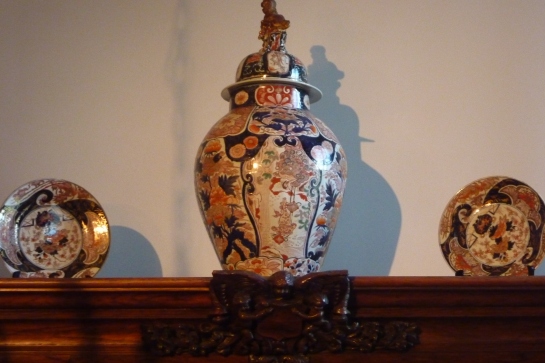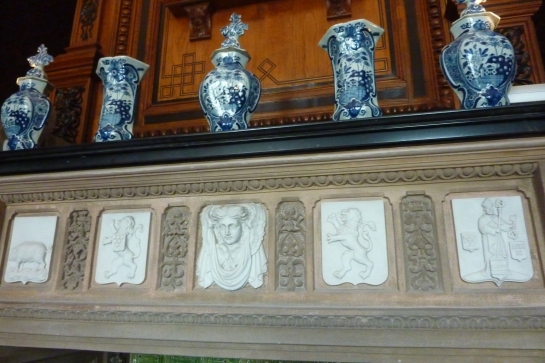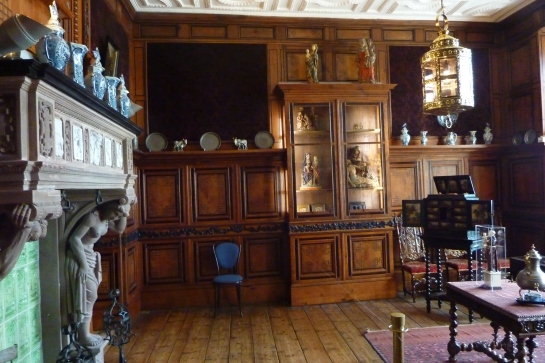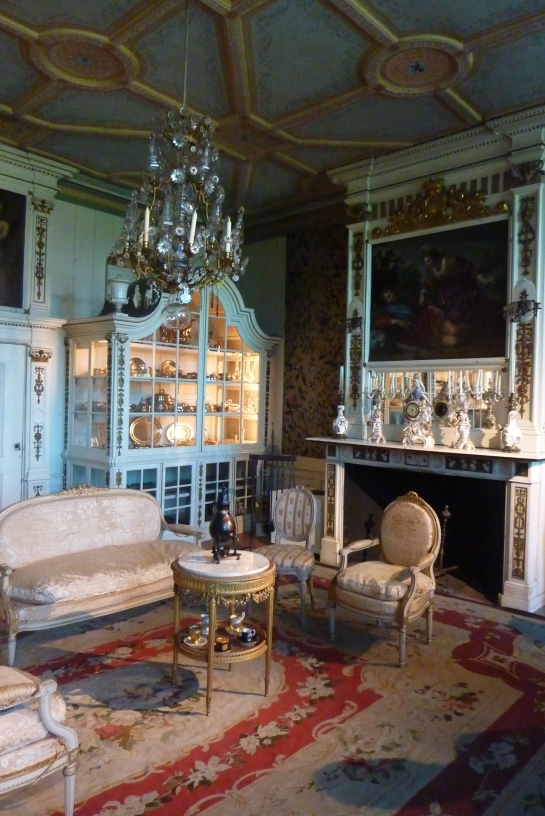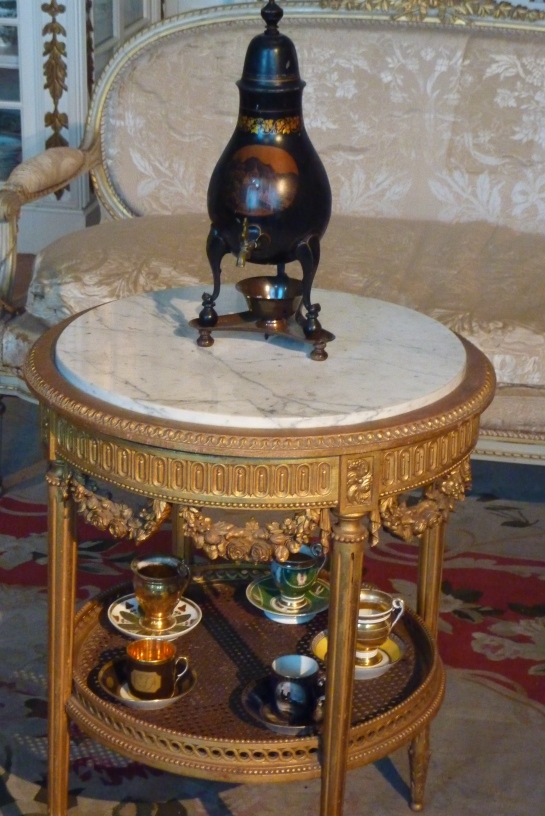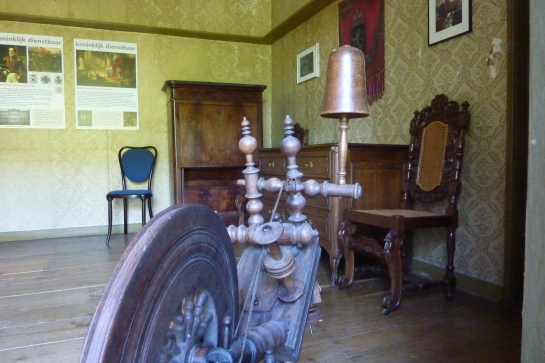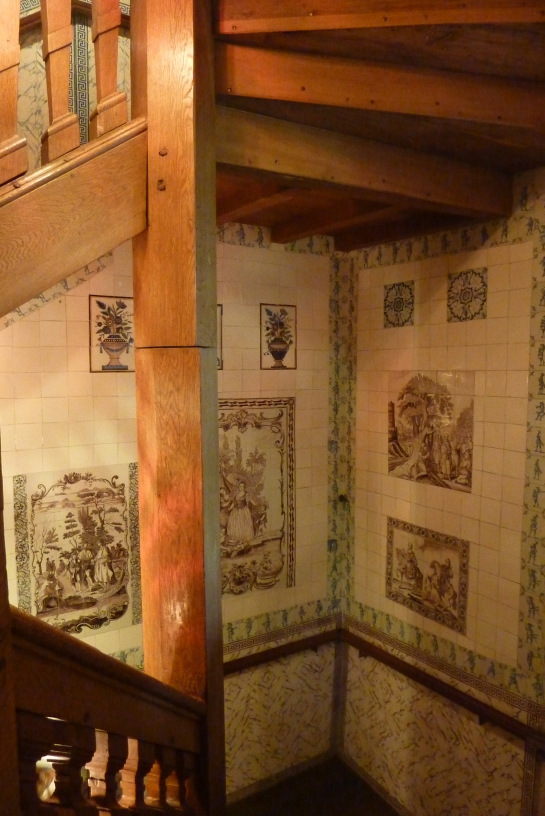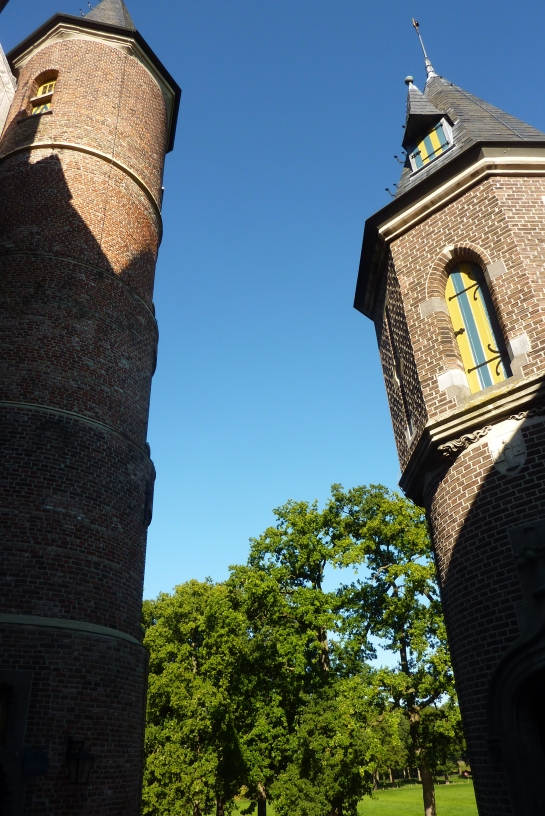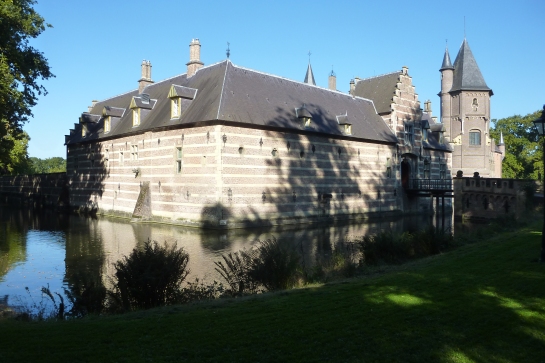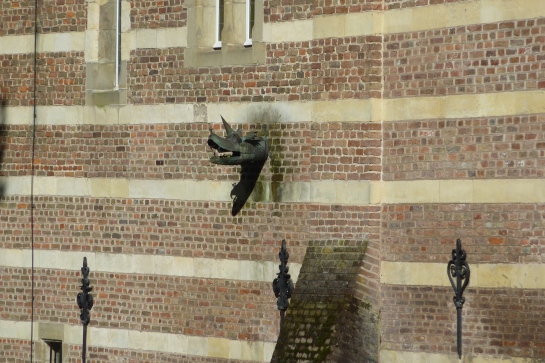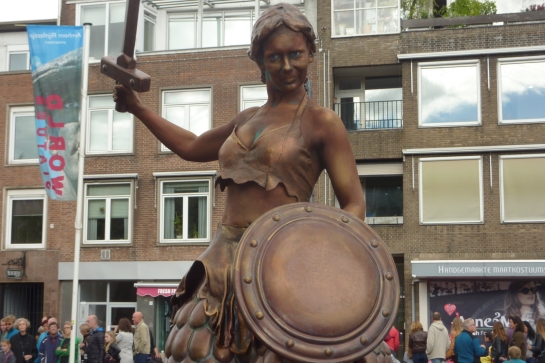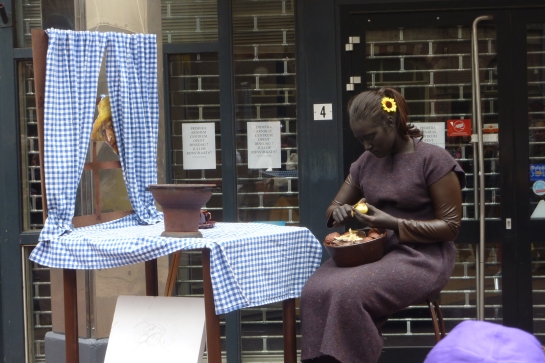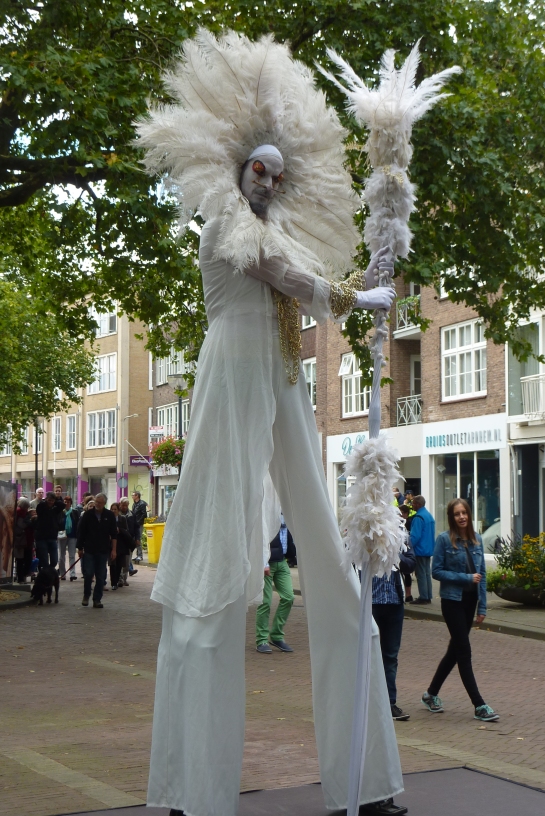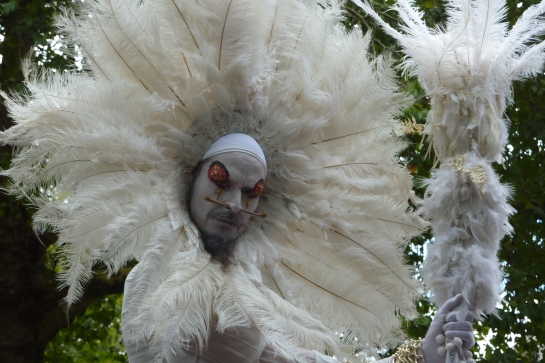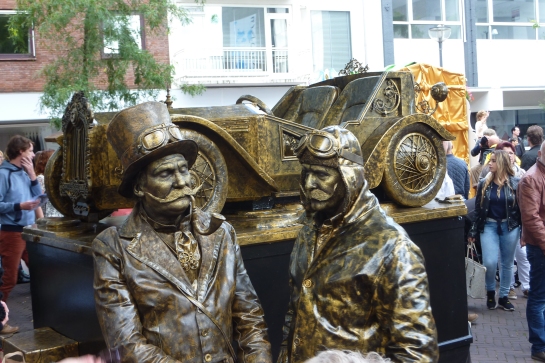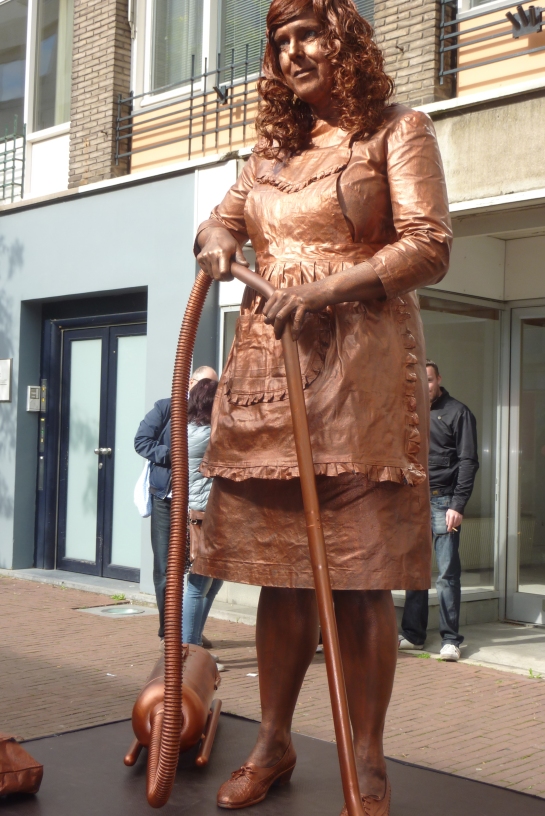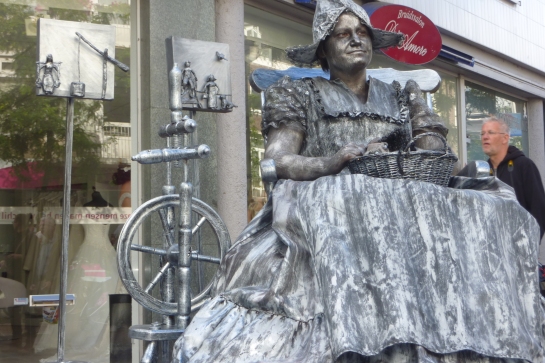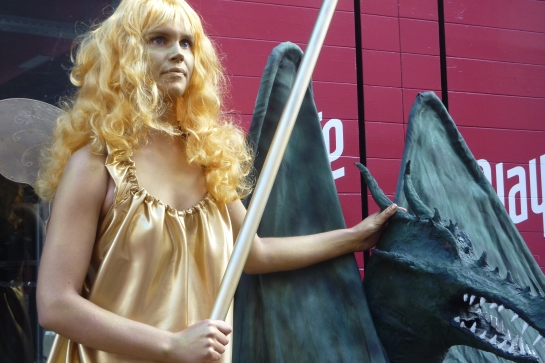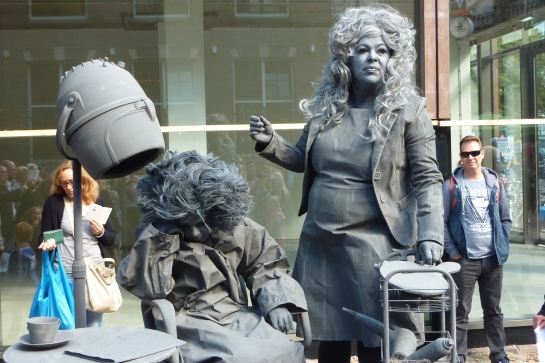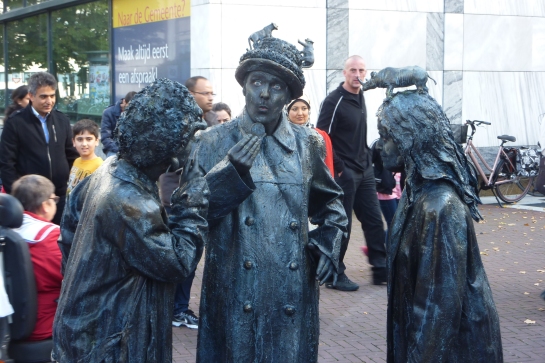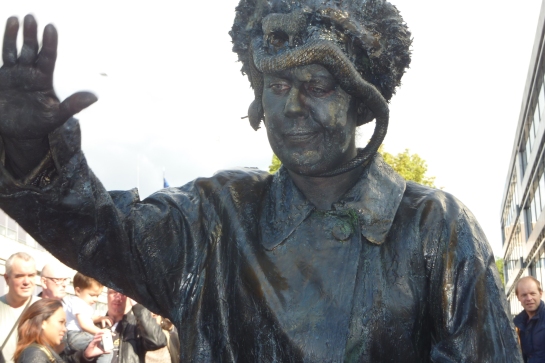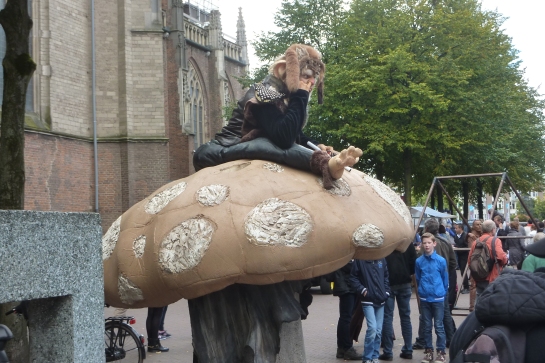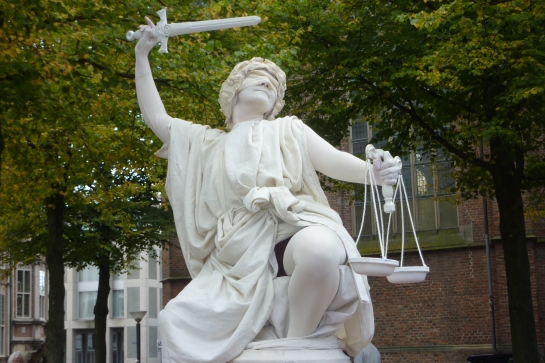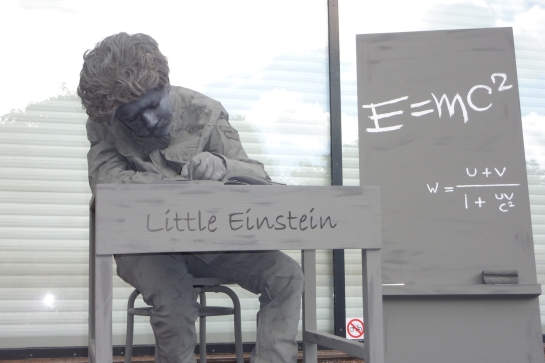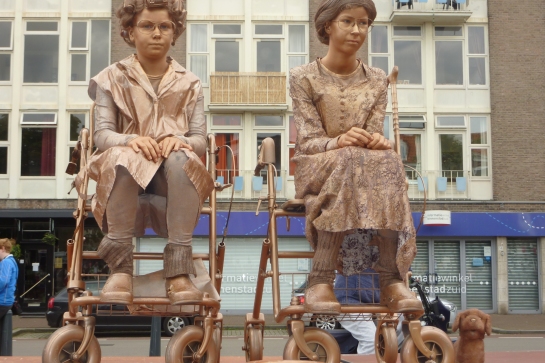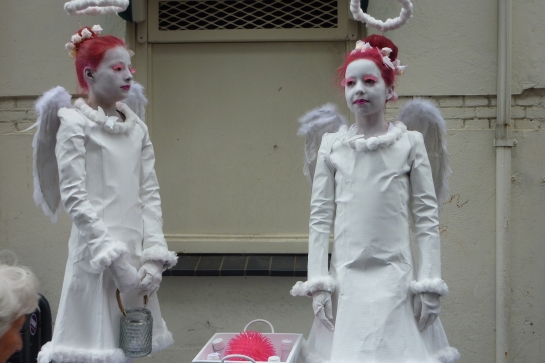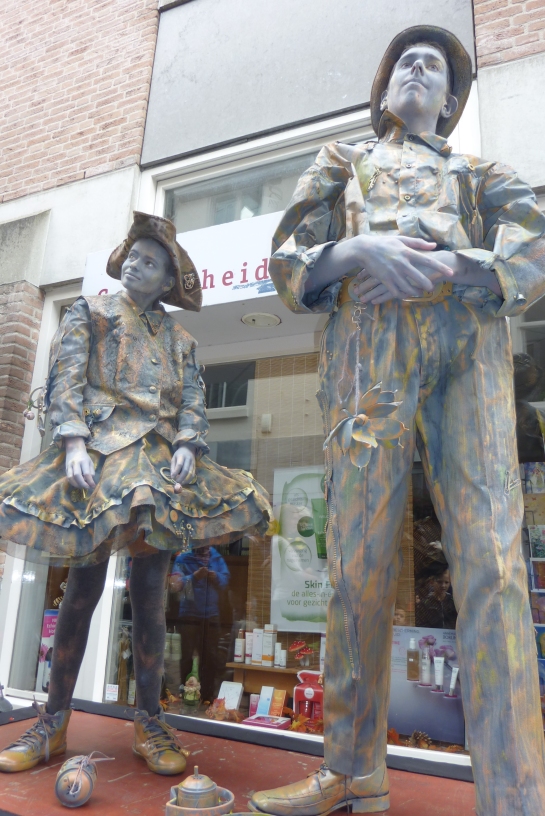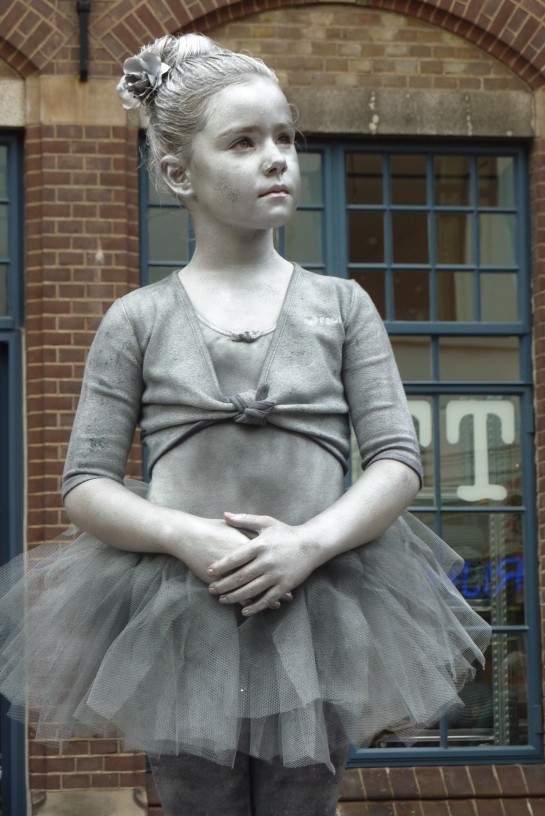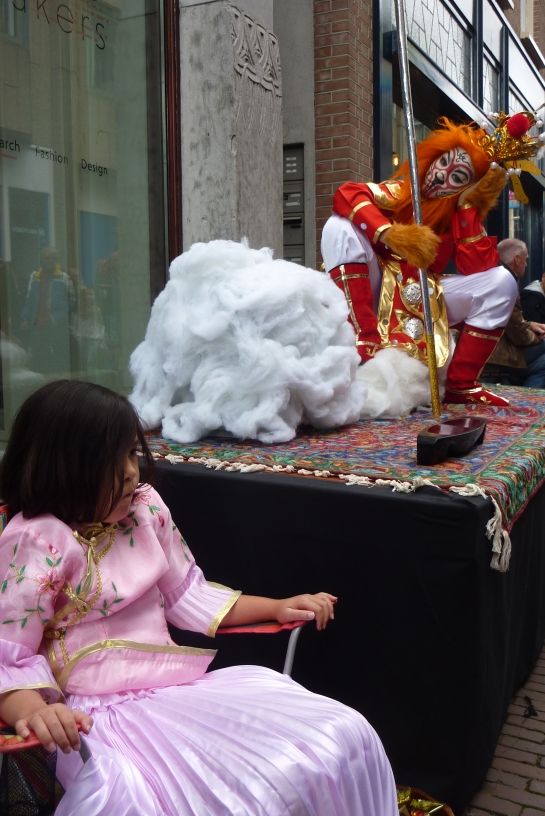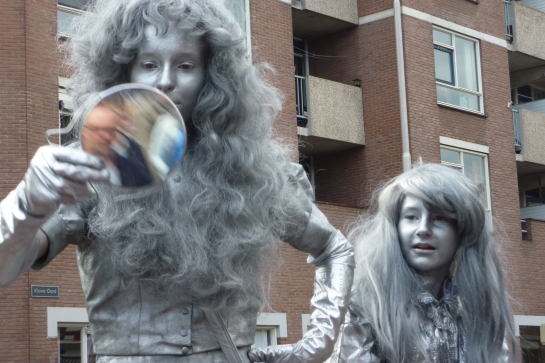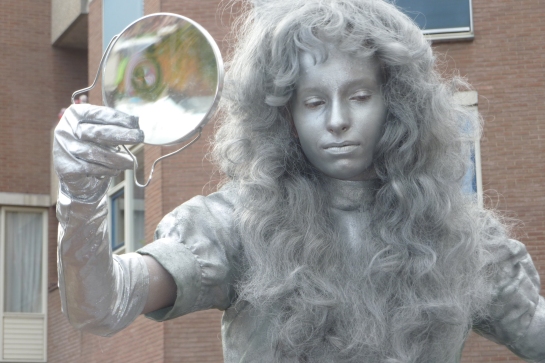Although, as a Hungarian, I had toured lots of places in Slovakia over the decades, way before the age of digital photograpy, I only visited Bratislava, or Pozsony to Hungarians, once about ten years ago. It was a very pleasant surprise, quite different from the stereotypical image of one of the largest housing estates and one of the most beautiful bridges in Europe, shown below:

For those who consider Budapest as one of the most beautiful Middle-European cities, I suggest visiting Bratislava instead. Not that one can’t find nice places in Budapest too, but the old town of Bratislava is, in my eyes, almost unique and can only be compared to Prague.
The city emerged as the capital of in Hungary (not of now, but of the historical one) when the Turks had invaded most of its historical territories, and when they were driven out of the country and Hungary came to be united with the Habsburgs instead, it became the seat of the Diet. Its vicinity to Vienna was important and remained so until the fall of Austro-Hungary at the end of WWI. All through those centuries, almost all important decisions and events in the kingdom of Hungary took place here.
After being the second largest city of Czechoslovakia afterwards, it naturally became the capital of the independent Slovakia in 1991. But in its streets, the feeling is one of old historical inheritance, not of modernity, thankfully. Its old buildings and memories seem to be well preserved, although it is a bustling modern city as well.
Where else to begin wandering through Bratislava than in the historic castle? Come and join me and experience parts of this beautiful city on the Danube.






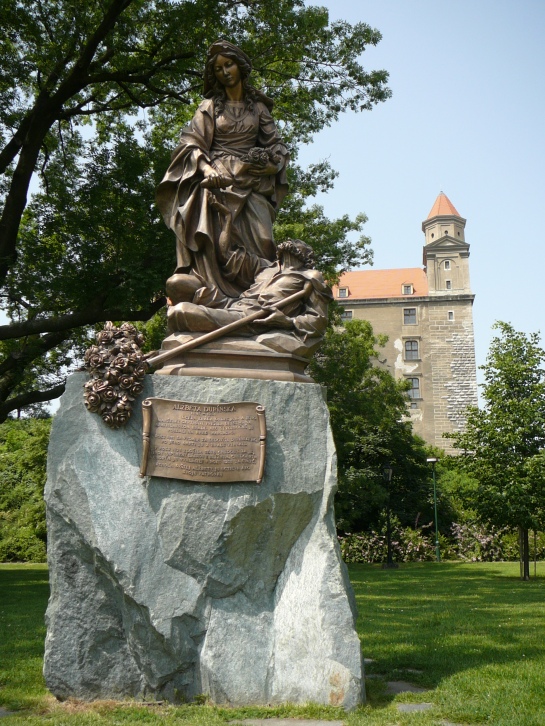
The view over the old town is beautiful from the Castle as well.
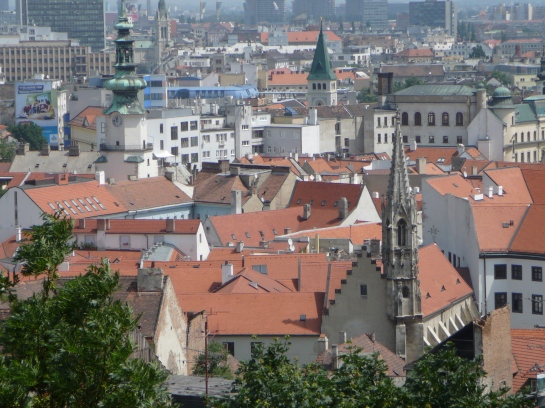
Outside the castle, everything still reminds one of old times.

Except for a few modern sculptures …



As earlier from above, St. Martin’s Cathedral, the coronation place for eleven Hungarian kings and queens, can be seen from many places throughout the inner city, as well as other beautiful churches.
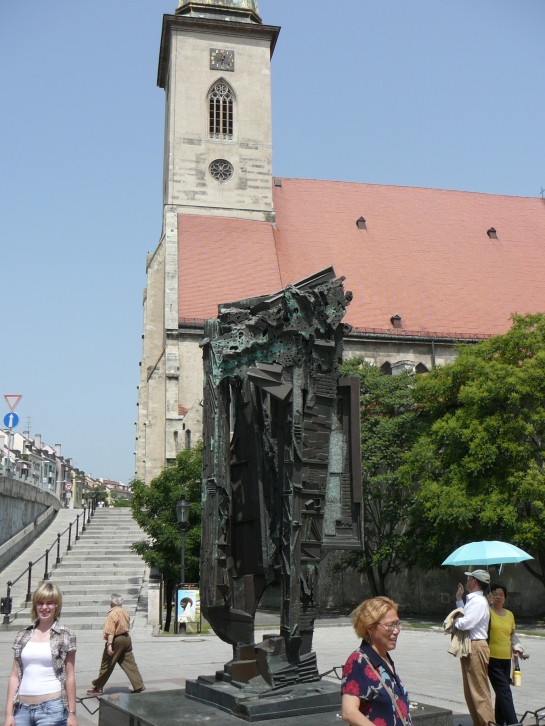




Although the old streets are charming enough, sometimes it’s worth peeping into a garden or under the arcades.


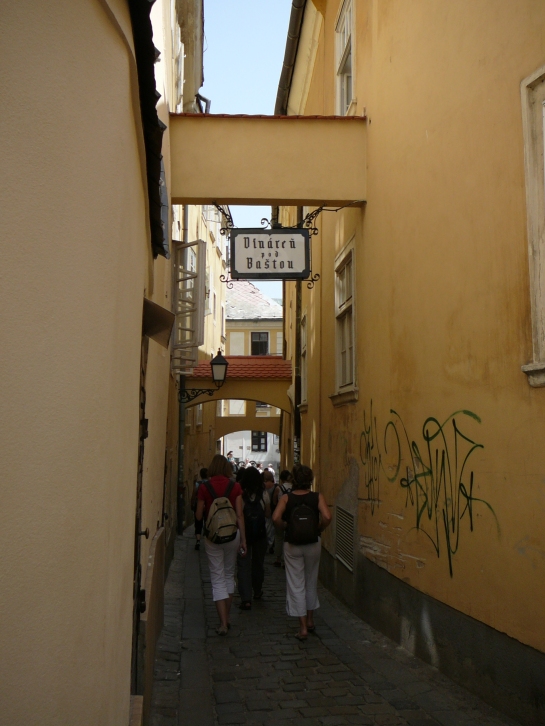

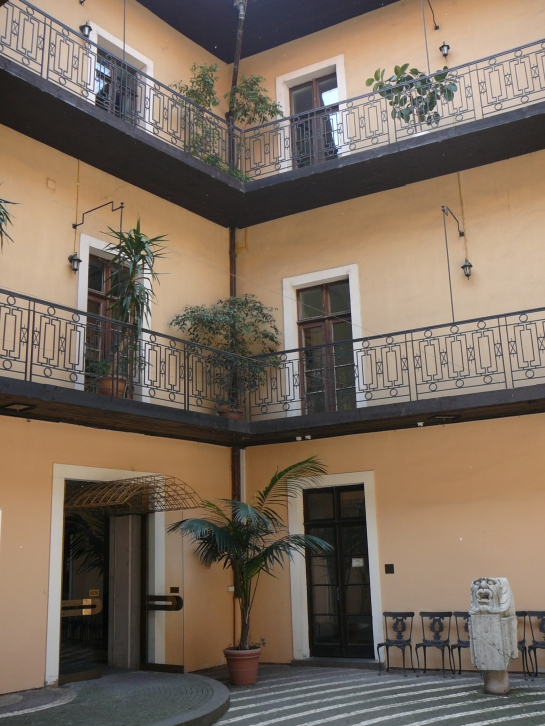

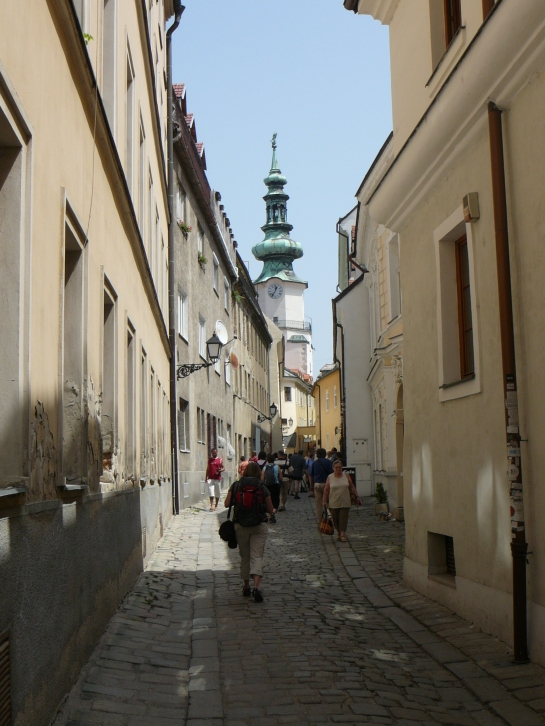

Although not as beautiful as the churches, still, the memory of the early recitals by the celebrated 19th century pianist, Liszt Ferenc, is also keenly preserved.



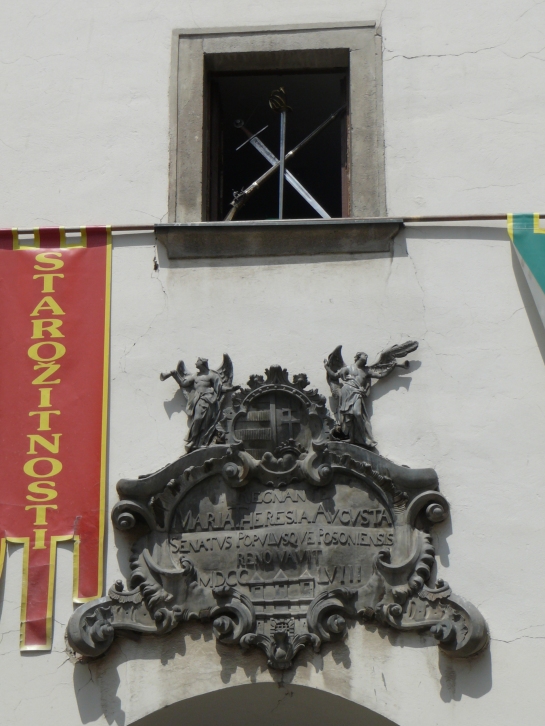
In a side street, I found a fascinating Eastern carpet shop.

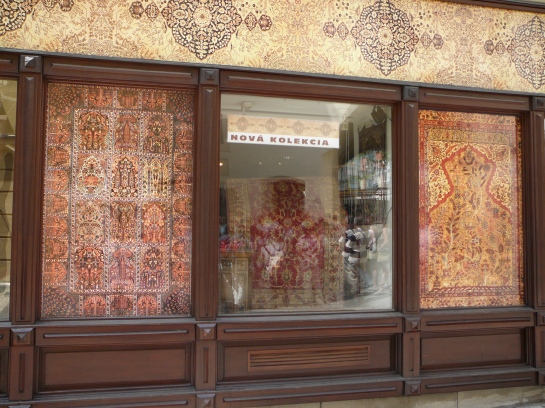




The building of the old national assembly (and the square where it stands) is especially beautiful.




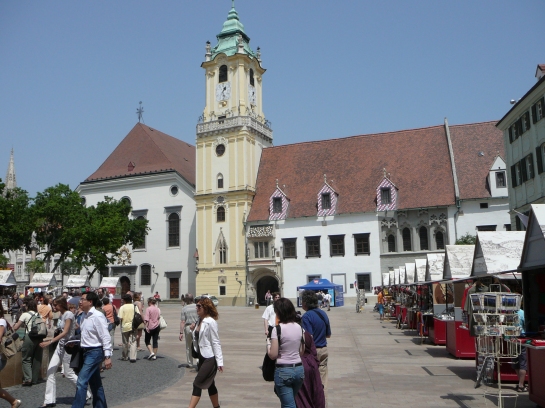

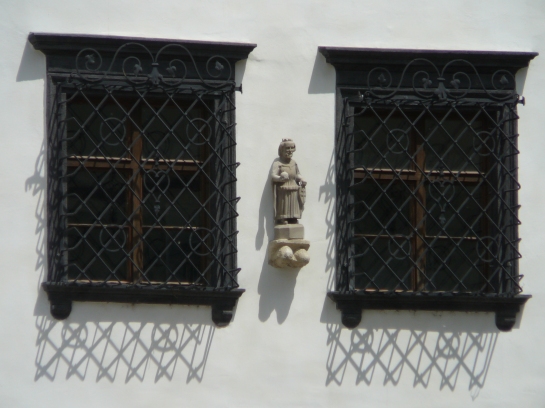
Many of the details on buildings are fascinating as some of the above show, yet, there are other, often very funny details just dropped into the streets.
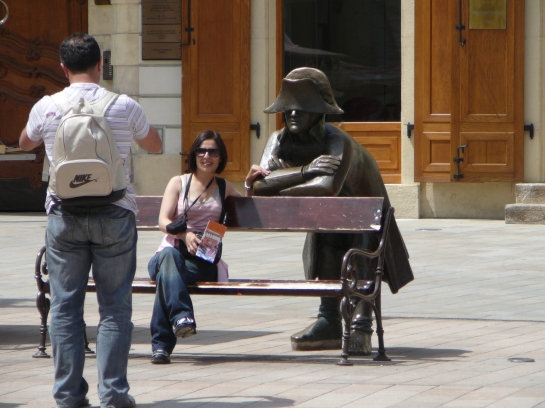




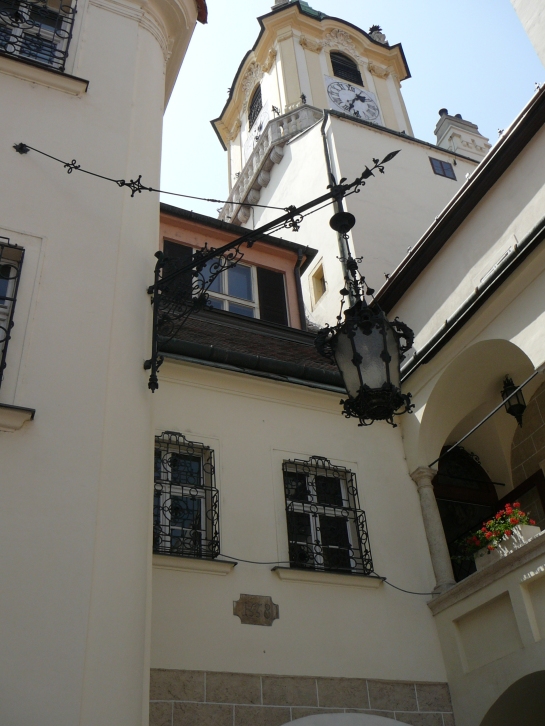
Hope you have enjoyed these excerpts and that you can once find the time to visit this charming, historical city, which lies just a few dozens of kilometres away from Vienna, the flashy city of the Kaisers.
by P.S.



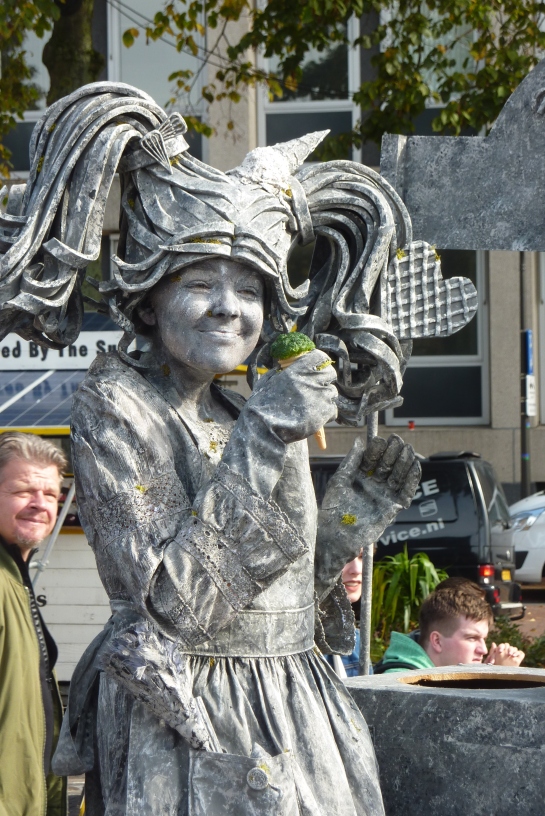
 This one may not have been performed by a young artist, but placing several performances right before the grey parapet surrounding the building area was definitely a strange and bad mistake. True, they got enough of the faint autumn sunshine, yet, it provided for strange effects.
This one may not have been performed by a young artist, but placing several performances right before the grey parapet surrounding the building area was definitely a strange and bad mistake. True, they got enough of the faint autumn sunshine, yet, it provided for strange effects.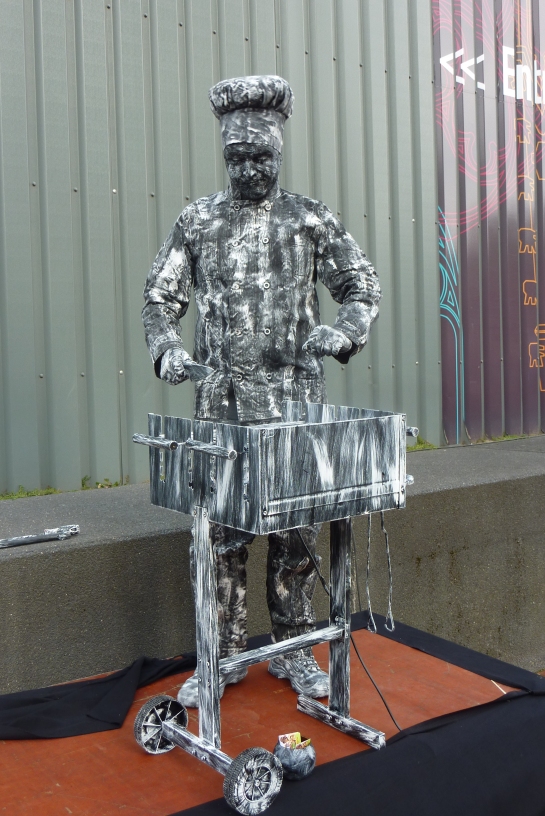
 Fortunately, one could move on to sculptures better placed in the inner city. Here most performers were adults.
Fortunately, one could move on to sculptures better placed in the inner city. Here most performers were adults. 


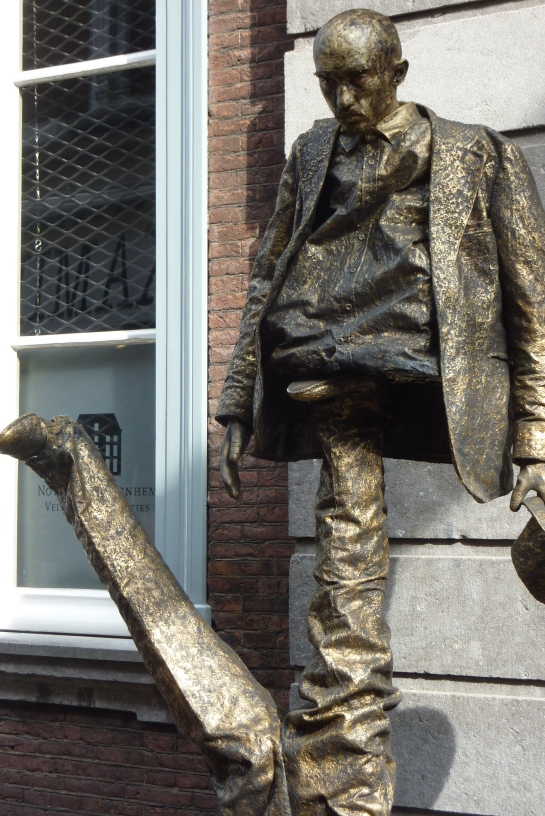



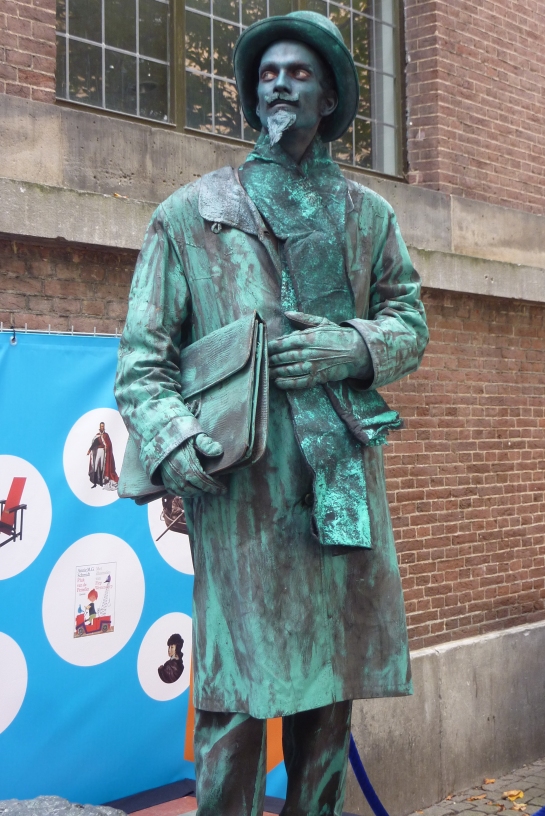

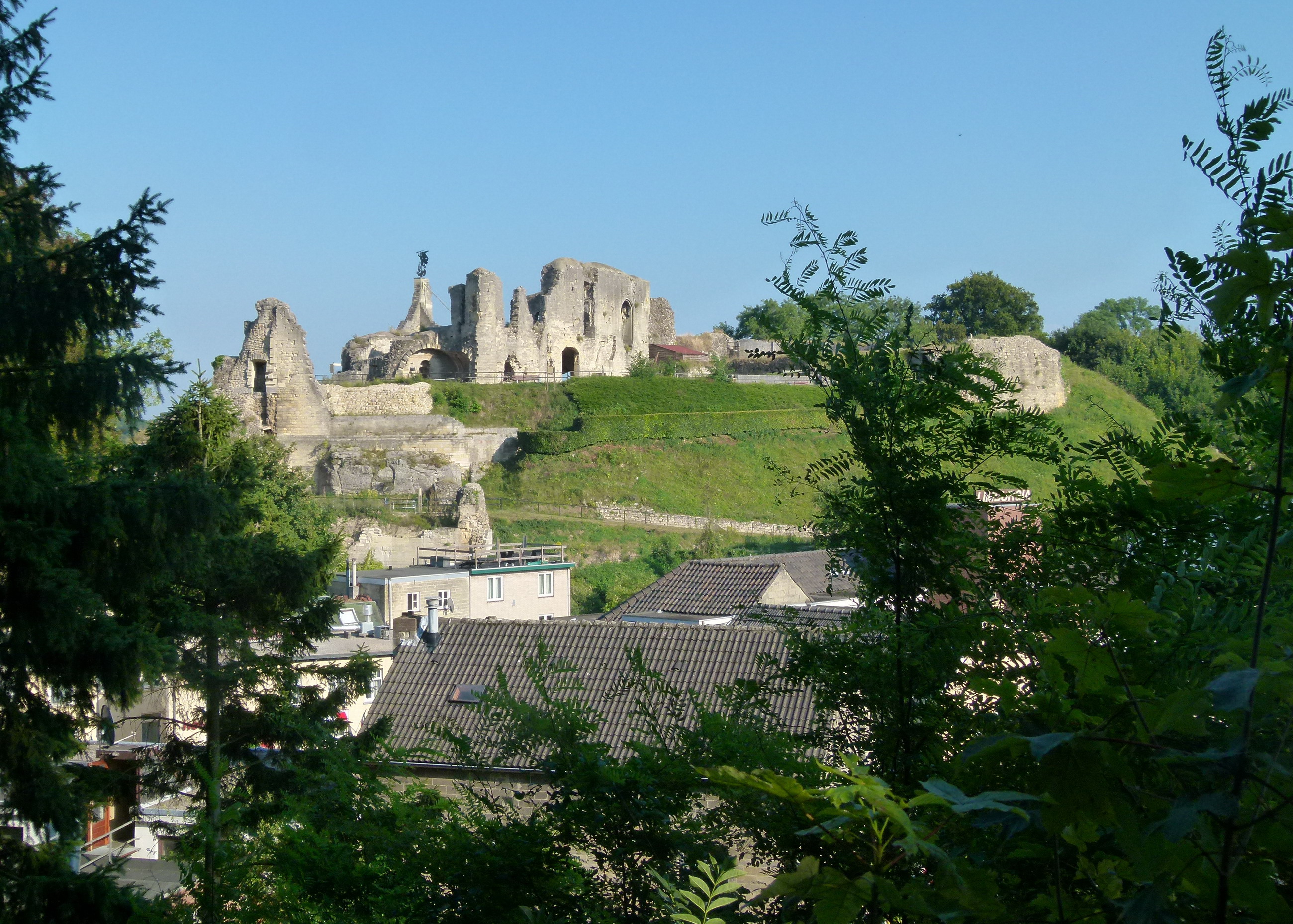
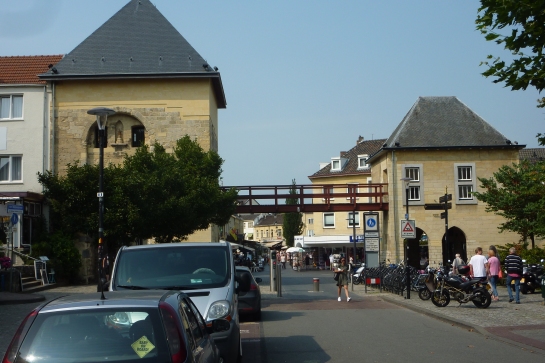 To the left of these gates, we can already see some of the castle itself, towering above the town,
To the left of these gates, we can already see some of the castle itself, towering above the town,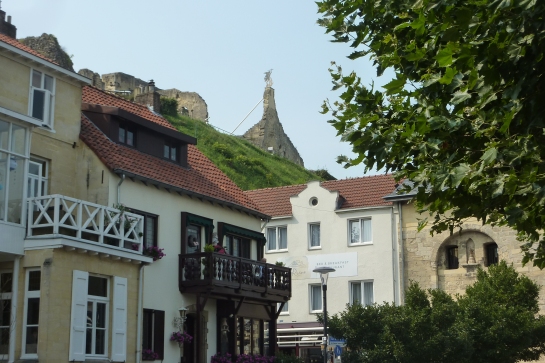 from where stone steps lead up the hill among nice marl rocks, which partly gave the material to the walls of the castle from the 11th to the 17th century. It is a beautiful path but not really worth climbing as the castle cannot be accessed through the little gate up there, only after climbing downstairs and turning right again, missing most of the town.
from where stone steps lead up the hill among nice marl rocks, which partly gave the material to the walls of the castle from the 11th to the 17th century. It is a beautiful path but not really worth climbing as the castle cannot be accessed through the little gate up there, only after climbing downstairs and turning right again, missing most of the town.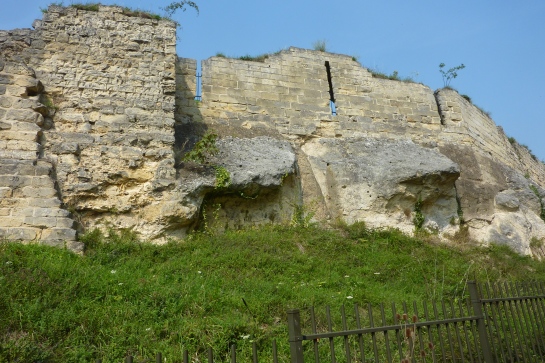
 Better walk through the busy Grotestraat from Berkelpoort (above),
Better walk through the busy Grotestraat from Berkelpoort (above),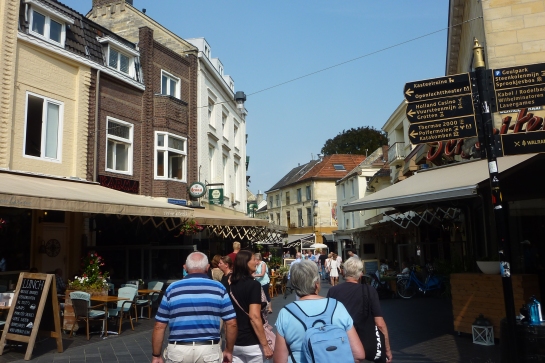 make some plans about what else to see later and then head towards Grendelpoort,
make some plans about what else to see later and then head towards Grendelpoort, from where, keeping left, it’s real easy to reach the entrance to the castle. There are enough steps to climb here, but there’s also a huge new lift to take up those needing it.
from where, keeping left, it’s real easy to reach the entrance to the castle. There are enough steps to climb here, but there’s also a huge new lift to take up those needing it. From here the visitor has a wonderful view of the outside of the inner castle:
From here the visitor has a wonderful view of the outside of the inner castle: It is only here that we have to pay an entrance fee to the inner castle as everything is free up to this point. Then a long walk takes us around in two directions, both leading to further steps inside.
It is only here that we have to pay an entrance fee to the inner castle as everything is free up to this point. Then a long walk takes us around in two directions, both leading to further steps inside.
 There’s a very good view, complete with Belkerpoort, over the inner city towards the north from these walls:
There’s a very good view, complete with Belkerpoort, over the inner city towards the north from these walls: Then we can visit what has remained of the former palace buildings after the French blew it up in the Dutch War in 1762: the chapel, the knights’ hall and some more.
Then we can visit what has remained of the former palace buildings after the French blew it up in the Dutch War in 1762: the chapel, the knights’ hall and some more.
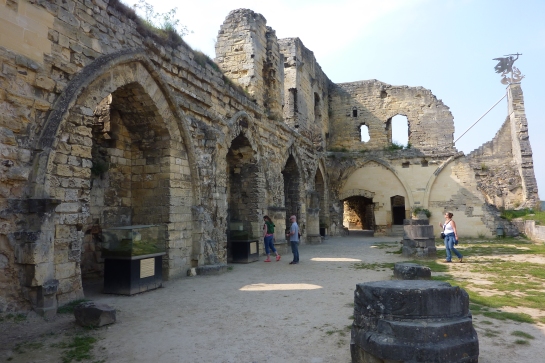

 In a corner of the knights’ hall, we can wonder why there are two such a huge piles of raw column basalt in the corner. But we can understand soon …
In a corner of the knights’ hall, we can wonder why there are two such a huge piles of raw column basalt in the corner. But we can understand soon … First we may circle the area to have further views, for example towards the quarries and the Wilhelminatoren, which can be reached by cablecar as well as on foot.
First we may circle the area to have further views, for example towards the quarries and the Wilhelminatoren, which can be reached by cablecar as well as on foot.
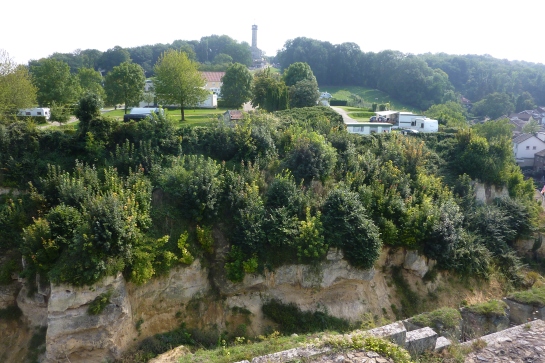 Then on towards the southern side of the palace remains:
Then on towards the southern side of the palace remains: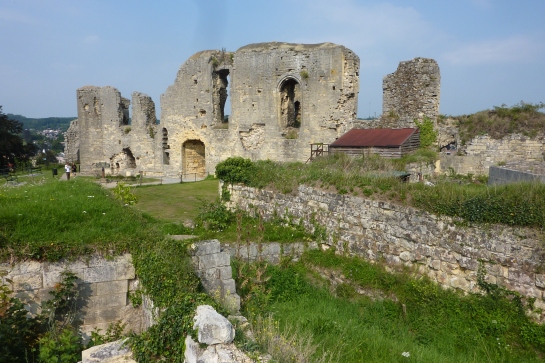
 And it’s here that we can understand the huge columns of basalt:
And it’s here that we can understand the huge columns of basalt: that is, they were used for strengthening the inside of that walls as the outer surfaces of marl may not be strong enough to withstand attacks. They were now used for reconstructing some of the old walls of course.
that is, they were used for strengthening the inside of that walls as the outer surfaces of marl may not be strong enough to withstand attacks. They were now used for reconstructing some of the old walls of course. If you are cycling, you can climb Cauberg instead of staying – but be prepared for a real steep climb. Afterwards, however, it’s real fast downhill to Maastricht, almost directly to the station to catch your train.
If you are cycling, you can climb Cauberg instead of staying – but be prepared for a real steep climb. Afterwards, however, it’s real fast downhill to Maastricht, almost directly to the station to catch your train.
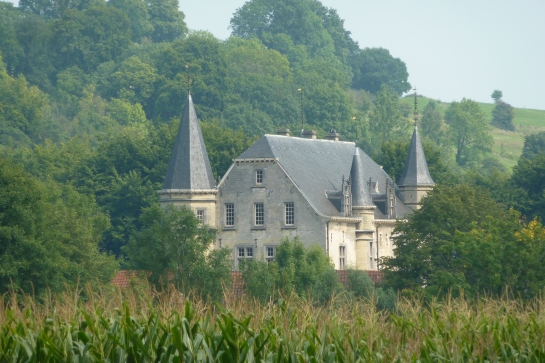 This little castle (seen here only above the roof of its outhouse from the main road) stands just outside the little village of Oud Valkenburg near Valkenburg, a nice little town in Brabant, a short drive from Maastricht, in the Netherlands. While it can’t be visited inside, the building is beautiful enough for us to give it a look on a day out when the weather is good. It can easily be reached by bike as well, and it’s a good walk from Valkenburg as well near/across some nice forest. The creek the Kleine Geul also provides a nice background along the way.
This little castle (seen here only above the roof of its outhouse from the main road) stands just outside the little village of Oud Valkenburg near Valkenburg, a nice little town in Brabant, a short drive from Maastricht, in the Netherlands. While it can’t be visited inside, the building is beautiful enough for us to give it a look on a day out when the weather is good. It can easily be reached by bike as well, and it’s a good walk from Valkenburg as well near/across some nice forest. The creek the Kleine Geul also provides a nice background along the way.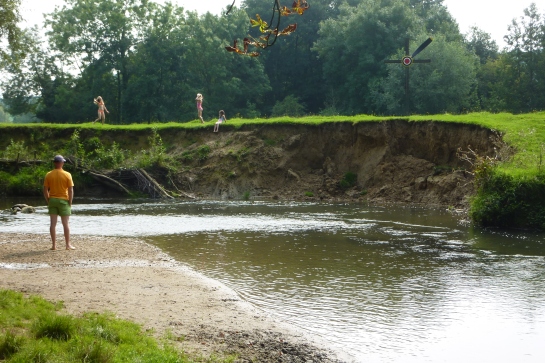 Along the back road and following path, there are a few other places to be used or visited: tennis courts, a football field, another old building complex houses and old people’s home, then, above on the hill, there is also a nice old house called De Kluis. I didn’t have enough time to walk up there, so I went on around the castle.
Along the back road and following path, there are a few other places to be used or visited: tennis courts, a football field, another old building complex houses and old people’s home, then, above on the hill, there is also a nice old house called De Kluis. I didn’t have enough time to walk up there, so I went on around the castle.
 Of course it is more impressive from the south, the direction of the entrance across from the moat. The buildings to the left contain the holiday homes.
Of course it is more impressive from the south, the direction of the entrance across from the moat. The buildings to the left contain the holiday homes.

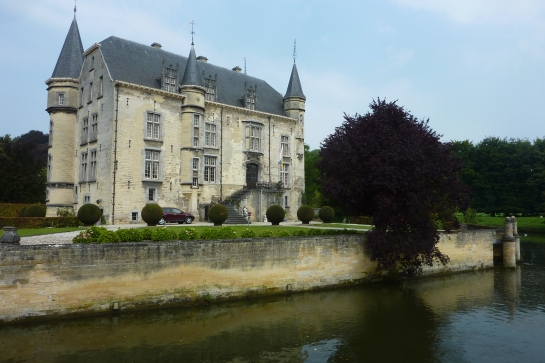 A little walk across the gatehouse, which is not a nice brasserie, takes us to the castle to the right and the old outhouses to the left, where one can stay the night.
A little walk across the gatehouse, which is not a nice brasserie, takes us to the castle to the right and the old outhouses to the left, where one can stay the night.

 Unfortunately, one can’t join the people lunching on the entrance terrace of the castle, nor visit, but sitting down for a bear or meal outside the brasserie in this neighbourhood still is a nice programme.
Unfortunately, one can’t join the people lunching on the entrance terrace of the castle, nor visit, but sitting down for a bear or meal outside the brasserie in this neighbourhood still is a nice programme.
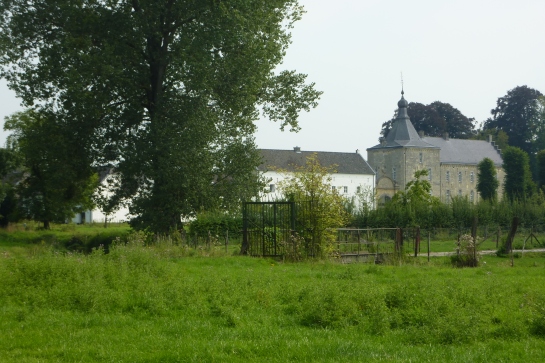 The old name means “The House”. Unfortunately, this can only be seen from the outside too and can’t be walked around, even though it has a moat around too, but the area is completely private. It can be approached to the left of the path connecting the Schaloen to the main road and then taking the first to the left again.
The old name means “The House”. Unfortunately, this can only be seen from the outside too and can’t be walked around, even though it has a moat around too, but the area is completely private. It can be approached to the left of the path connecting the Schaloen to the main road and then taking the first to the left again.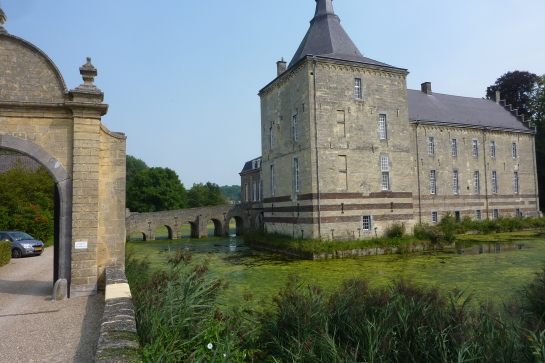

 No entry! But we can peek. Somebody has some nice big space there.
No entry! But we can peek. Somebody has some nice big space there.
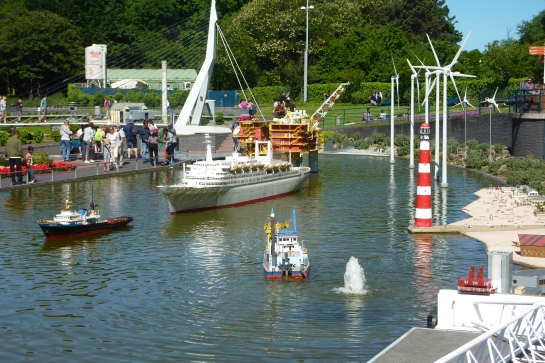
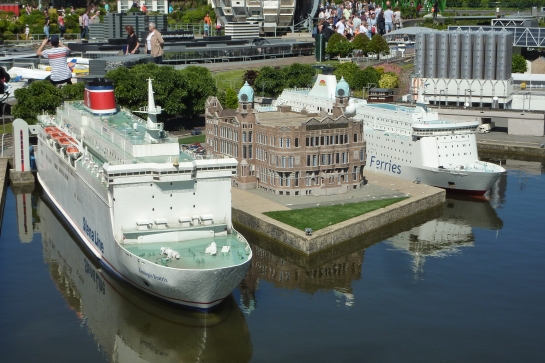
 Of course, the windmills cannot be far away, as they have always served water management at least as much as the milling of grain.
Of course, the windmills cannot be far away, as they have always served water management at least as much as the milling of grain. This area serves as a major attraction for little children, not only because of the thrill of watching – or waiting to watch – various trains flip by, criss-crossing the area, but because they can cooperate with each other on putting out a fire on a tanker, float wooden containers down rivers and channels or load and unload containers in a harbour.
This area serves as a major attraction for little children, not only because of the thrill of watching – or waiting to watch – various trains flip by, criss-crossing the area, but because they can cooperate with each other on putting out a fire on a tanker, float wooden containers down rivers and channels or load and unload containers in a harbour. Further inside the park, the area is more or less arranged by cities. Here we can visit the inner cities of Amsterdam, Utrecht, The Hague and others along with famous architectural relics around them. Starting with Muiderslot, the castle of Muiden SE of Amsterdam, here’s a series of examples without special order.
Further inside the park, the area is more or less arranged by cities. Here we can visit the inner cities of Amsterdam, Utrecht, The Hague and others along with famous architectural relics around them. Starting with Muiderslot, the castle of Muiden SE of Amsterdam, here’s a series of examples without special order.

 The quality of some of the models is really beathtaking.
The quality of some of the models is really beathtaking.

 I really appreciated the care invested in the immediate environment of the models: what in reality are tall trees or full-grown bushes have been pruned back, ikebana style, with breathtakingly realistic miniature trees and bushes, where even the flowers are fit to size.
I really appreciated the care invested in the immediate environment of the models: what in reality are tall trees or full-grown bushes have been pruned back, ikebana style, with breathtakingly realistic miniature trees and bushes, where even the flowers are fit to size.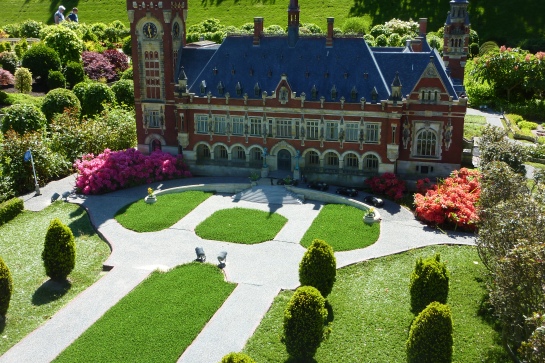 Fortuntely for toddlers and small kids, there’s a big and good playground behind this row of houses:
Fortuntely for toddlers and small kids, there’s a big and good playground behind this row of houses: There are some other exhibitions showing Dutch history and the life of the person, George Maduro, who was the inspiration behind the park. In the middle, there’s also a huge globe-like structure, ‘Fantasitron’, in which people can be scanned in 3D and afterwards be posted a 3D sculpture of themselves.
There are some other exhibitions showing Dutch history and the life of the person, George Maduro, who was the inspiration behind the park. In the middle, there’s also a huge globe-like structure, ‘Fantasitron’, in which people can be scanned in 3D and afterwards be posted a 3D sculpture of themselves.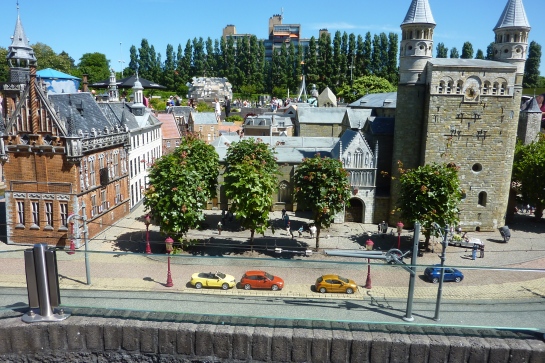 is, in our opinion, is ugly and destroys some of the effect of the place. Besides, the park is rather small for the €16,5 entrance fee. The size of the area can be judged well based on this photo:
is, in our opinion, is ugly and destroys some of the effect of the place. Besides, the park is rather small for the €16,5 entrance fee. The size of the area can be judged well based on this photo: and we can testify to the fact that it is small.
and we can testify to the fact that it is small.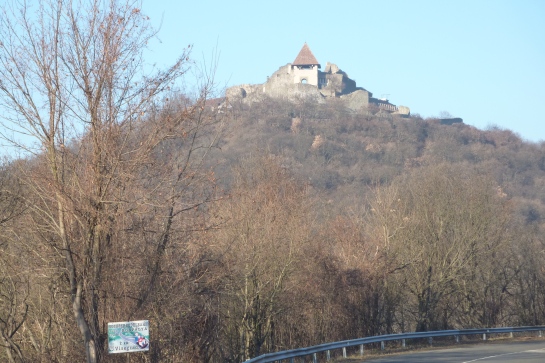 It has a famous Slavic name, though, also made famous by a part of Smetana’s Má vlast (My Homeland) cycle: Visgrád in Hungarian, Višegrad in Czech as well as in Serbian to denote not only Smetanas mucis but also the castles in those territories. The name meanst Upper Castle, or High Castle. Out of those castles, it is probably the Hungarian Visegrád which stands upon the highest elevation above its neighbourhood. When you’ve made it upstairs, wonderful panoramic views can be enjoyed.
It has a famous Slavic name, though, also made famous by a part of Smetana’s Má vlast (My Homeland) cycle: Visgrád in Hungarian, Višegrad in Czech as well as in Serbian to denote not only Smetanas mucis but also the castles in those territories. The name meanst Upper Castle, or High Castle. Out of those castles, it is probably the Hungarian Visegrád which stands upon the highest elevation above its neighbourhood. When you’ve made it upstairs, wonderful panoramic views can be enjoyed.
 There are two ways of approach. One is when you drive around the mountain to a parking place relatively high up on the mountain side and pay. Then the entrance is through this tower.
There are two ways of approach. One is when you drive around the mountain to a parking place relatively high up on the mountain side and pay. Then the entrance is through this tower. One can park near the Danube, though. It is the much longer path, but on the way, one can enjoy the ruins of the 15th c. palace of the famous king Matthias, who brought the renaissance and power to Hungary before the kingdom was submerged in chaos and was overrun by the Turks. Here are a few photos of the remains of the last real golden age of Hungary.
One can park near the Danube, though. It is the much longer path, but on the way, one can enjoy the ruins of the 15th c. palace of the famous king Matthias, who brought the renaissance and power to Hungary before the kingdom was submerged in chaos and was overrun by the Turks. Here are a few photos of the remains of the last real golden age of Hungary.
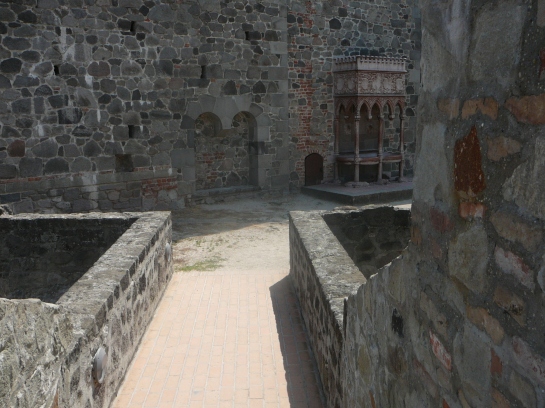
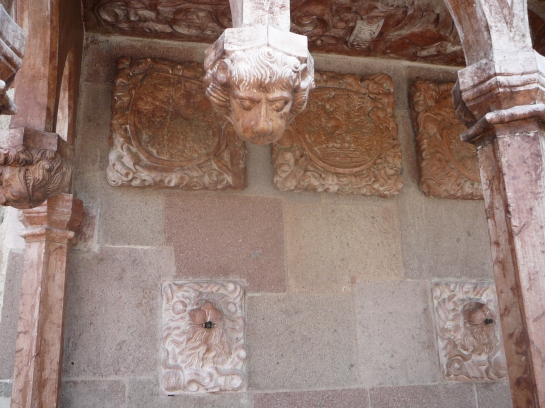
 After the palace, the ascent takes us up through the Tower of Salamon, one of the earliest of the fortifications.
After the palace, the ascent takes us up through the Tower of Salamon, one of the earliest of the fortifications.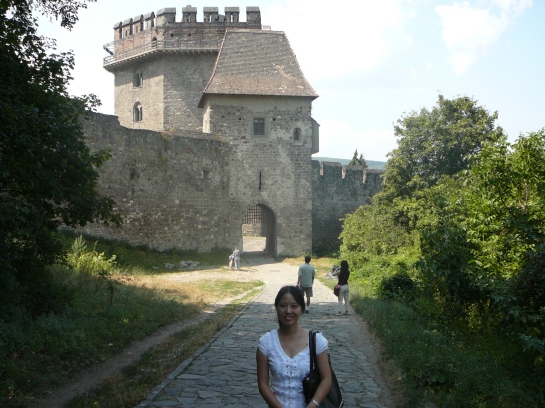 After some more, steep climb, we get to the high castle, where we have to pay for the entrance. There is a small waxworks exhibition inside as well, but the point is the castle itself, which has been restored in good taste.
After some more, steep climb, we get to the high castle, where we have to pay for the entrance. There is a small waxworks exhibition inside as well, but the point is the castle itself, which has been restored in good taste.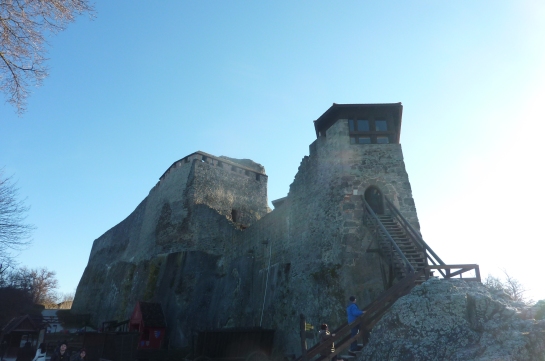
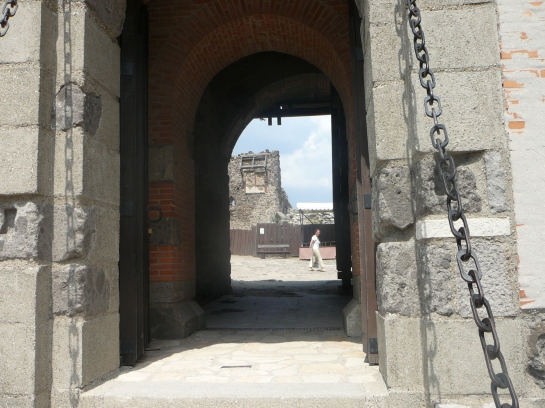


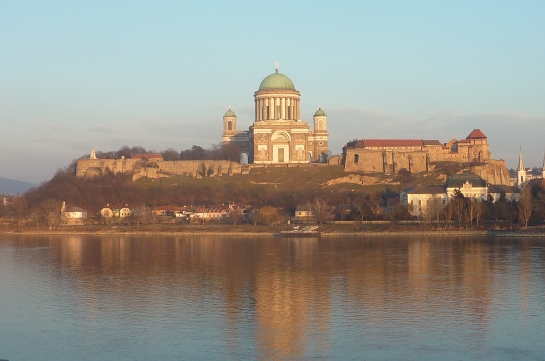 My first example here is the castle of Esztergom, which was one of the earliest castles in Hungary. It became one of the most important centres of the king before the Tartar invasion. As the castle withstood that invasion, its importance served as an example to what the country should do to prevent another invasion to happen. Unfortunately, the castle suffered enormously during the Turkish occupation and changed hands many times. Afterwards, the stones were carried away by locals to rebuild their houses. The basilica we can see in the above photo from the Slovak side of the Danube was finished at the place of the fortifications and the earlier palaces in 1869. This view is also the only kind that can show that Esztergom used to have a castle with defence lines and bastions.
My first example here is the castle of Esztergom, which was one of the earliest castles in Hungary. It became one of the most important centres of the king before the Tartar invasion. As the castle withstood that invasion, its importance served as an example to what the country should do to prevent another invasion to happen. Unfortunately, the castle suffered enormously during the Turkish occupation and changed hands many times. Afterwards, the stones were carried away by locals to rebuild their houses. The basilica we can see in the above photo from the Slovak side of the Danube was finished at the place of the fortifications and the earlier palaces in 1869. This view is also the only kind that can show that Esztergom used to have a castle with defence lines and bastions. The ruins can’t be seen from the roads, you even have to guess which road actually leads to near it. The reason has a lot to do with the fact that the area still belongs to the army. But as I was appalled by the fact that for this reason I couldn’t see these ruins 45 years ago, I gave it a try this time, when the army is no longer so important. Still, you are shooed away from the parking place, so you have to park a car by the roadside nearby. Then you have to climb a path of a few hundred metres on a dirt path to reach the ruins.
The ruins can’t be seen from the roads, you even have to guess which road actually leads to near it. The reason has a lot to do with the fact that the area still belongs to the army. But as I was appalled by the fact that for this reason I couldn’t see these ruins 45 years ago, I gave it a try this time, when the army is no longer so important. Still, you are shooed away from the parking place, so you have to park a car by the roadside nearby. Then you have to climb a path of a few hundred metres on a dirt path to reach the ruins.  What is a-typical here is that it was not blown up by the Habsburgs – the Turks blew it up before other castles met this inevitable fate. Not much can be seen today, but the view is beautiful.
What is a-typical here is that it was not blown up by the Habsburgs – the Turks blew it up before other castles met this inevitable fate. Not much can be seen today, but the view is beautiful.
 From the village, where you can park your car (but don’t be surprised if the parking metres don’t work), a few hundred metres again lead to the rebuilt fortification:
From the village, where you can park your car (but don’t be surprised if the parking metres don’t work), a few hundred metres again lead to the rebuilt fortification: Again, it’s not a big castle, but shows the middle-ages well. For a small payment, all the restored parts can be visited.
Again, it’s not a big castle, but shows the middle-ages well. For a small payment, all the restored parts can be visited.
 You can even enter a room which has been somewhat furnished (very rare in Hungarian castles except in Buda).
You can even enter a room which has been somewhat furnished (very rare in Hungarian castles except in Buda).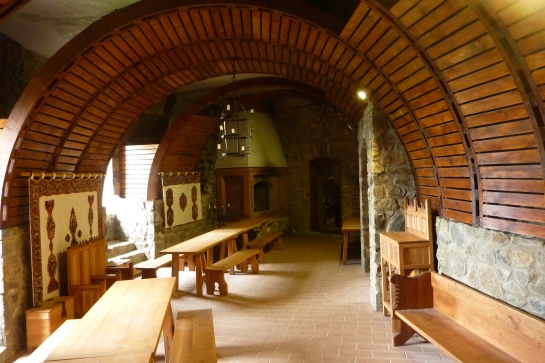
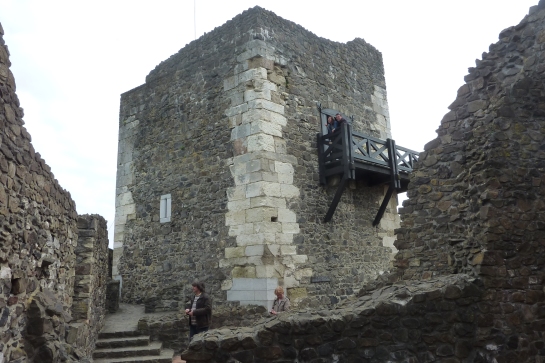 The view over the low hills from the walls is again beautiful.
The view over the low hills from the walls is again beautiful. With this, I bid farewell for a while. Hope you enjoyed it all and can visit the places some time to come.
With this, I bid farewell for a while. Hope you enjoyed it all and can visit the places some time to come. Buda castle is the largest castle in Hungary, probably second largest in the world only to the Hradzin in Prague (please enjoy my earlier photos about it starting
Buda castle is the largest castle in Hungary, probably second largest in the world only to the Hradzin in Prague (please enjoy my earlier photos about it starting  Although it was the ground for many a battle for the hegemony over Hungary, Buda castle survived relatively well, showing a lot of its original fortifications, partly thanks to its importance, which made it imperative for its rulers to restore damaged parts over the centuries. Here is a rarely-photographed side.
Although it was the ground for many a battle for the hegemony over Hungary, Buda castle survived relatively well, showing a lot of its original fortifications, partly thanks to its importance, which made it imperative for its rulers to restore damaged parts over the centuries. Here is a rarely-photographed side. Inside the huge complex, there are still scores of buildings going back to at least the Renaissance, which are mostly housing restaurants and shops for tourists today.
Inside the huge complex, there are still scores of buildings going back to at least the Renaissance, which are mostly housing restaurants and shops for tourists today. A lot of other, usually larger buildings are used by various organisations, the National Gallery, museums, churches, a theatre, and among them, the building of the Hungarian president can also be found. This one is one of the most beautiful of the early remains, just opposite the famous Matthias Church:
A lot of other, usually larger buildings are used by various organisations, the National Gallery, museums, churches, a theatre, and among them, the building of the Hungarian president can also be found. This one is one of the most beautiful of the early remains, just opposite the famous Matthias Church: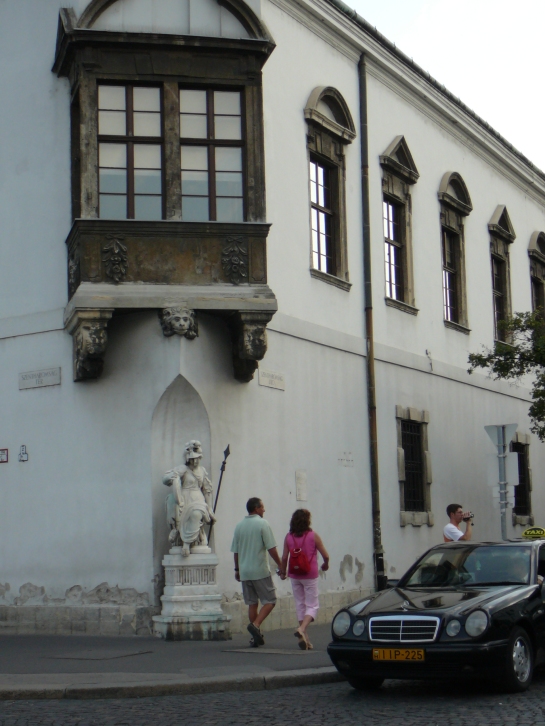 As Buda castle is one of the most widely photographed areas in the whole country, I’ll just show a couple of more photos for those who’re unfamiliar there. This is about the famous Fisherman’s Bastion, which is, despite its fortification-like looks, is a late-19th c. addition, followed by views of the Eastern side of the city, Pest.
As Buda castle is one of the most widely photographed areas in the whole country, I’ll just show a couple of more photos for those who’re unfamiliar there. This is about the famous Fisherman’s Bastion, which is, despite its fortification-like looks, is a late-19th c. addition, followed by views of the Eastern side of the city, Pest.
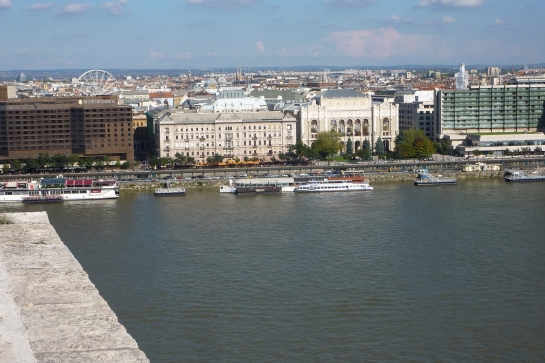

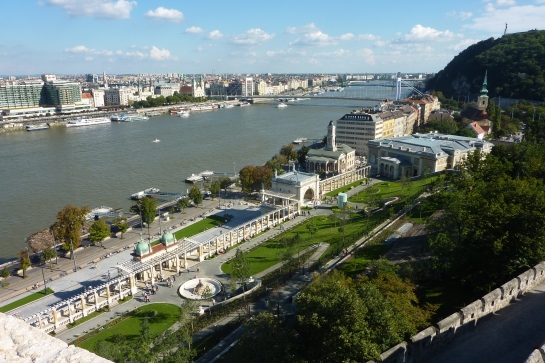 Definitely beautiful but touristy, so let’s head to another beauty, which is a lot more typical of what kinds of castles are mostly found around the country. This one is above Lake Balaton (or Plattensee for German speakers) and is above a village called Szigliget. The castle was built on a smaller one of the famous and picturesque volcanic leftover mountains above most of the Northern side of Europe’s largest lake.
Definitely beautiful but touristy, so let’s head to another beauty, which is a lot more typical of what kinds of castles are mostly found around the country. This one is above Lake Balaton (or Plattensee for German speakers) and is above a village called Szigliget. The castle was built on a smaller one of the famous and picturesque volcanic leftover mountains above most of the Northern side of Europe’s largest lake. It has also had a turbulent, but typical history of wars, battles and desolation in Hungary, but has been restored quite well, without overdoing it, not trying to show any of its “full” form, but it’s not in complete ruins either – both of which kind I’ll show some examples in my following post. So let’s scale the winding paths and stairs and see it.
It has also had a turbulent, but typical history of wars, battles and desolation in Hungary, but has been restored quite well, without overdoing it, not trying to show any of its “full” form, but it’s not in complete ruins either – both of which kind I’ll show some examples in my following post. So let’s scale the winding paths and stairs and see it.

 We’ll definitely notice the beautiful landscape around, which is a lot less touristy than that from Buda Castle, but definitely enjoyable for rovers. The bigger mountain opposite is St. George’s mount, a bit further from the lake than the touristy Badacsony.
We’ll definitely notice the beautiful landscape around, which is a lot less touristy than that from Buda Castle, but definitely enjoyable for rovers. The bigger mountain opposite is St. George’s mount, a bit further from the lake than the touristy Badacsony. Hope you’ve enjoyed roving around with me and you’ll join me on the next tour as well.
Hope you’ve enjoyed roving around with me and you’ll join me on the next tour as well.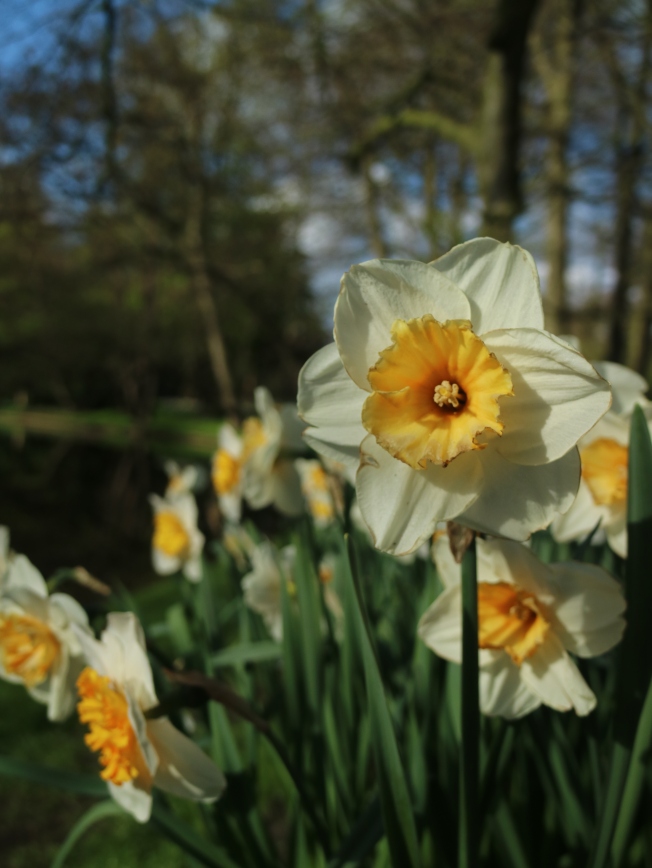 We had a really fortunate day when we had to travel to Den Haag anyway. By the time we finished there, it was a bright sunny day, albeit not entirely warm at all. But after a short visit to the seaside nearby, we went on to enjoy a wonderful day among the flowers in this enchanted world. Keukenhof can be approached easily by car either from Amsterdam, Haarlem, Leiden, The Hague or Rotterdam as it is situated right in their middle. Expect to pay €16 per adult and €8 per child and also that even small children with small rollers are not allowed in – we came with two of these to make it possible for the kids to roll easily from place to place without getting to tired but we had to park them in a locked place. I personally don’t know why exactly this was the rule as people were allowed in with dogs on long leashes, which definitely disturbs lots of people, but one can’t argue. Instead, enjoy! We aren’t adding comments as the variation of flowers – and with them, names – is so vast that it’s impossible to keep up.
We had a really fortunate day when we had to travel to Den Haag anyway. By the time we finished there, it was a bright sunny day, albeit not entirely warm at all. But after a short visit to the seaside nearby, we went on to enjoy a wonderful day among the flowers in this enchanted world. Keukenhof can be approached easily by car either from Amsterdam, Haarlem, Leiden, The Hague or Rotterdam as it is situated right in their middle. Expect to pay €16 per adult and €8 per child and also that even small children with small rollers are not allowed in – we came with two of these to make it possible for the kids to roll easily from place to place without getting to tired but we had to park them in a locked place. I personally don’t know why exactly this was the rule as people were allowed in with dogs on long leashes, which definitely disturbs lots of people, but one can’t argue. Instead, enjoy! We aren’t adding comments as the variation of flowers – and with them, names – is so vast that it’s impossible to keep up.





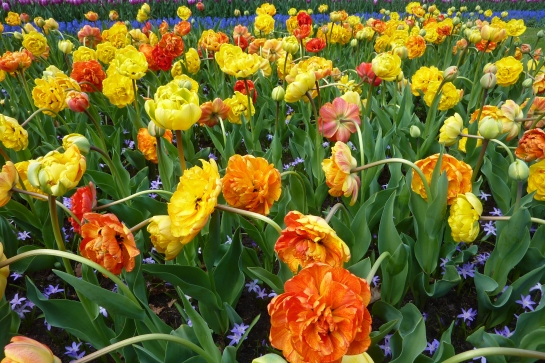




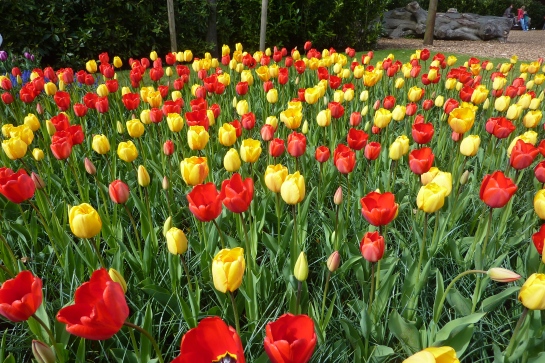




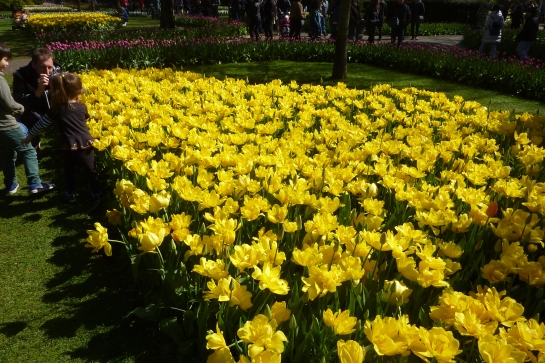

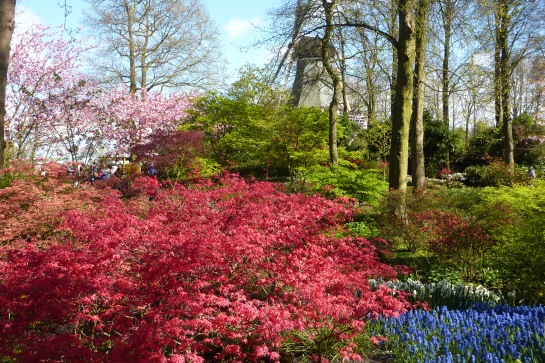
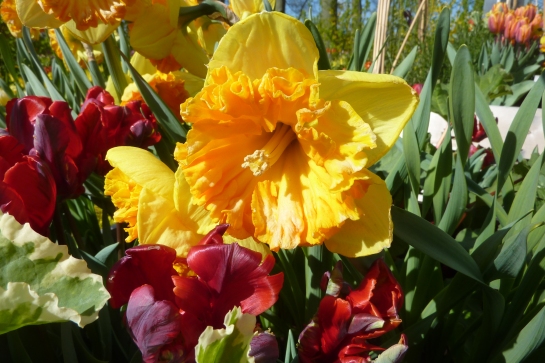








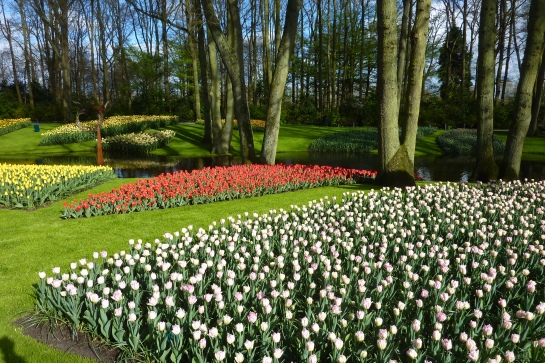




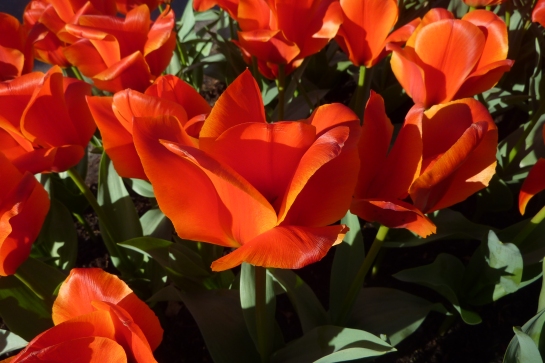


 If one has more than two days to spend in Prague, (s)he will most probably come back to the castle again, at least to have another look at the city, even if it’s a cold, windy day. This time around, we’ll look at the outer walls of the palaces overlooking the river, then look down.
If one has more than two days to spend in Prague, (s)he will most probably come back to the castle again, at least to have another look at the city, even if it’s a cold, windy day. This time around, we’ll look at the outer walls of the palaces overlooking the river, then look down.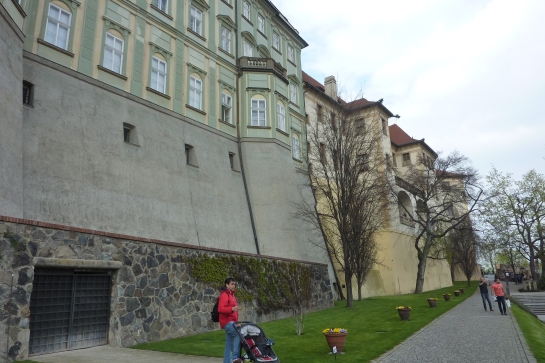
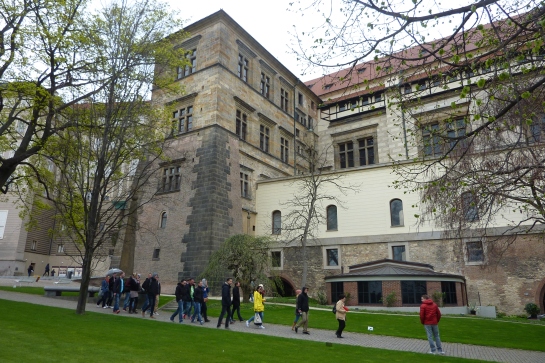
 On a sunny day, it looks a lot more cheerful, of course. So does the city below.
On a sunny day, it looks a lot more cheerful, of course. So does the city below.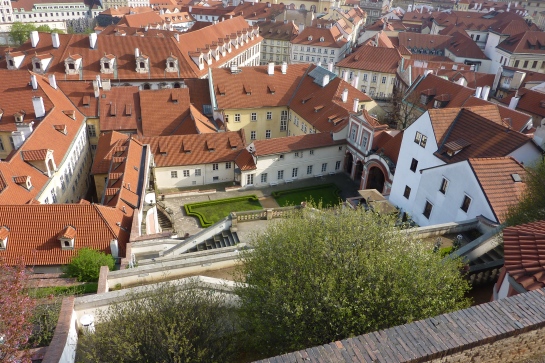
 But wait, what’s that dark wall over there? Closer …
But wait, what’s that dark wall over there? Closer …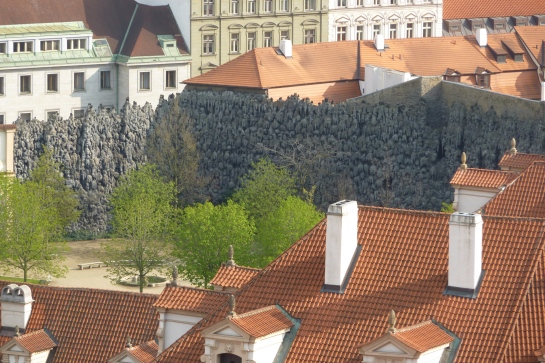 Still uncertain … Let’s get down there.
Still uncertain … Let’s get down there. Some interesting sculptures can also be seen in the garden as we approach that wall.
Some interesting sculptures can also be seen in the garden as we approach that wall.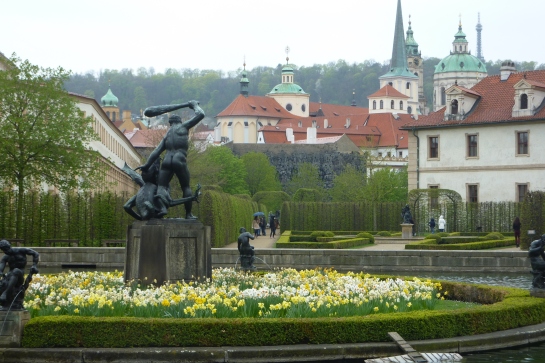


 Some of those sculptures are quite old, this Laokoon below, for example, by a Dutch sculptor, is from the early 17th century.
Some of those sculptures are quite old, this Laokoon below, for example, by a Dutch sculptor, is from the early 17th century. To the left of this path is that wall, which turns out to be called ‘dripstone’, which, outside of geology, is a a
To the left of this path is that wall, which turns out to be called ‘dripstone’, which, outside of geology, is a a 
 and there is even a big aviary for eagle owls made of these walls there.
and there is even a big aviary for eagle owls made of these walls there.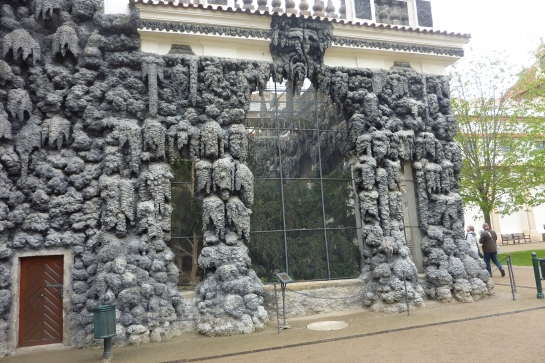 After having a good look, we can retract our steps and then, on the left side, we can go through a door to the Senate of the Czech Parliament – we have actually seen this entrance down the path among the sculptures, above. Here we get into a nice inner yard.
After having a good look, we can retract our steps and then, on the left side, we can go through a door to the Senate of the Czech Parliament – we have actually seen this entrance down the path among the sculptures, above. Here we get into a nice inner yard.  This is the Senate building, where, in the basement, we can see a nice collection of presents presented to members of the Parliament and other government official on their visits to a lot of countries around the world, from Zimbabwe through Turkey to Malaysia and further – a rare collection of people’s self-reflection.
This is the Senate building, where, in the basement, we can see a nice collection of presents presented to members of the Parliament and other government official on their visits to a lot of countries around the world, from Zimbabwe through Turkey to Malaysia and further – a rare collection of people’s self-reflection.
 Only then did I find the front of the palace. Looking around a bit here, I finish my accounts of Prague. Hope you’ve enjoyed all of it and that you can also visit this gem of Middle-Europe, or similar Czech cities if you haven’t already been there.
Only then did I find the front of the palace. Looking around a bit here, I finish my accounts of Prague. Hope you’ve enjoyed all of it and that you can also visit this gem of Middle-Europe, or similar Czech cities if you haven’t already been there.
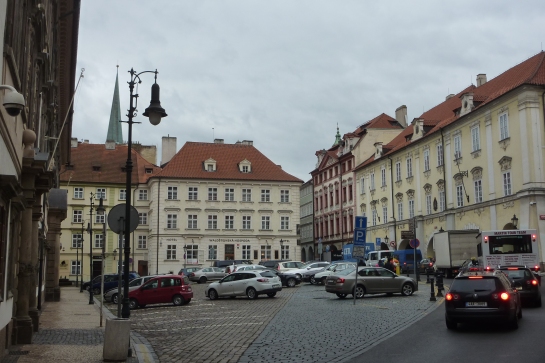
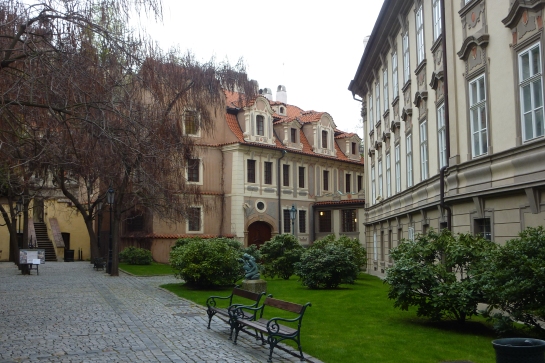


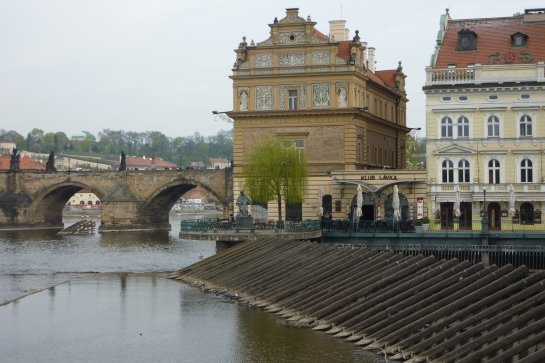 A bit long after the previous post, but not forgetting this wonderful city, I’m starting out at a quite inglorous place – at first sight, those odious shafts above the river catch the sight of the visitor. However, the house in the middle is the Smetana Museum. We mustn’t forget that Prague was the birthplace or working home of numerous excellent Czech composers, some of whom are famous, like Smetana, some less famous but non-the-less excellent, like Vítězslav Novák (
A bit long after the previous post, but not forgetting this wonderful city, I’m starting out at a quite inglorous place – at first sight, those odious shafts above the river catch the sight of the visitor. However, the house in the middle is the Smetana Museum. We mustn’t forget that Prague was the birthplace or working home of numerous excellent Czech composers, some of whom are famous, like Smetana, some less famous but non-the-less excellent, like Vítězslav Novák ( This time, we are going to concentrate exclusively on the other side of the river, so we’re crossing over the Charles Bridge again and approaching the castle differently. Actually, the following routes are the more usual ways to approach than those in my previous posts. On the way, though, there’s an interesting, partly underground shopping area, which reminds us of the fact that the Czech were once also famous about their crystal-ware. How much of it is real now is anybody’s guess.
This time, we are going to concentrate exclusively on the other side of the river, so we’re crossing over the Charles Bridge again and approaching the castle differently. Actually, the following routes are the more usual ways to approach than those in my previous posts. On the way, though, there’s an interesting, partly underground shopping area, which reminds us of the fact that the Czech were once also famous about their crystal-ware. How much of it is real now is anybody’s guess. 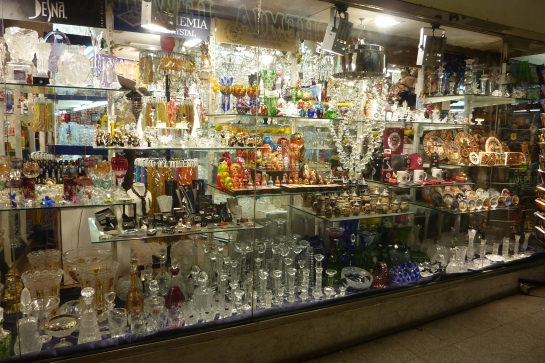 But take heart, there are at least scores, if not hundreds of other shops in the area selling something similar stuff.
But take heart, there are at least scores, if not hundreds of other shops in the area selling something similar stuff.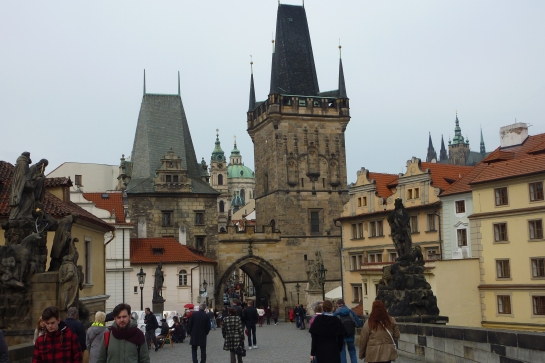 On the other end of the bridge, we find ourselves in small but beautiful streets again.
On the other end of the bridge, we find ourselves in small but beautiful streets again. 


 Under those arcades, lots of small pubs, restaurants and vendors can be found – but behind them, we can also get a glimpse of real life:
Under those arcades, lots of small pubs, restaurants and vendors can be found – but behind them, we can also get a glimpse of real life: 

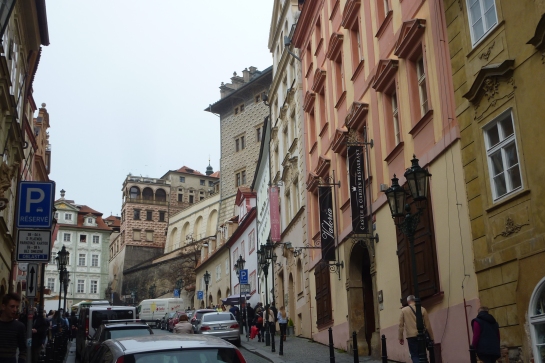 Having reached the upper level of the castle, it is worth crossing a bridge over an old ditch under the walls on the other side. A rare, but beautiful aspect of the cathedral, real old castle walls and a nice garden is our prize.
Having reached the upper level of the castle, it is worth crossing a bridge over an old ditch under the walls on the other side. A rare, but beautiful aspect of the cathedral, real old castle walls and a nice garden is our prize. 

 My real aim today is, however, inside the castle: the Lobkowicz Palace. The building is huge, though not particularly interesting, but inside there is a good museum from the collection of this once mighty family over the centuries. Be generous with your purse, though: the entrance fee is rather steep, about €14. Most of the paintings are, uninterestingly for me, are portraits of old family members and related people one tends to forget, but the artefacts are mostly very fine.
My real aim today is, however, inside the castle: the Lobkowicz Palace. The building is huge, though not particularly interesting, but inside there is a good museum from the collection of this once mighty family over the centuries. Be generous with your purse, though: the entrance fee is rather steep, about €14. Most of the paintings are, uninterestingly for me, are portraits of old family members and related people one tends to forget, but the artefacts are mostly very fine.





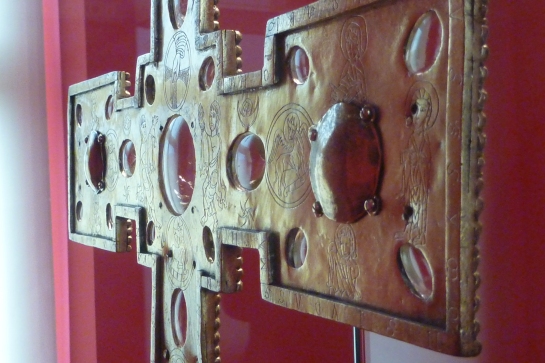
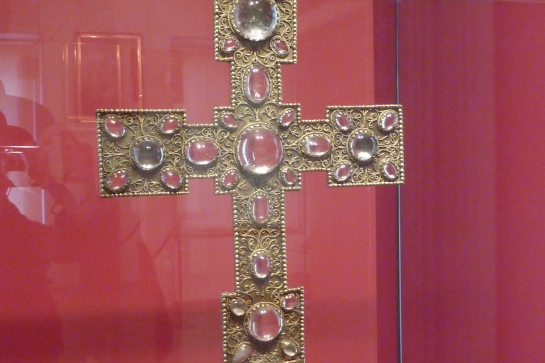
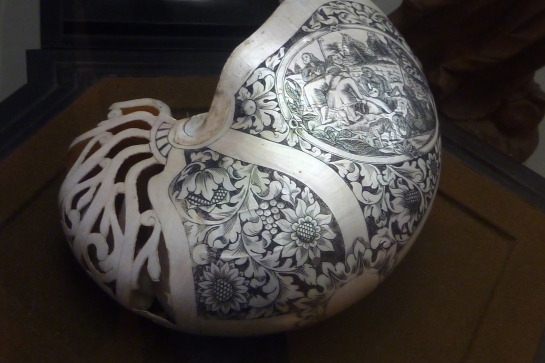

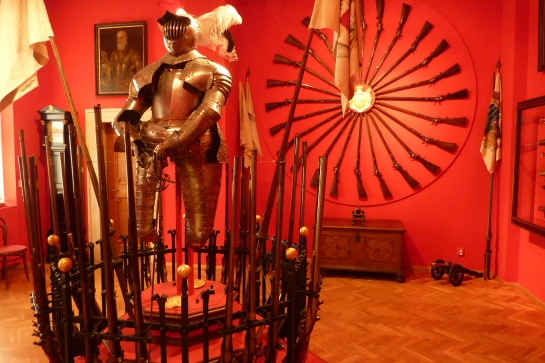
 Some members of the family used to be very refined musicians, so a room full of their instruments is in order – if I remember well, Beethoven is said to occasionally be among the guests who played on some of them along the earl.
Some members of the family used to be very refined musicians, so a room full of their instruments is in order – if I remember well, Beethoven is said to occasionally be among the guests who played on some of them along the earl. There are a few very interesting paintings in the last room: originals by Canaletto and a couple of others. From the historical view, at least, they are very-very interesting.
There are a few very interesting paintings in the last room: originals by Canaletto and a couple of others. From the historical view, at least, they are very-very interesting.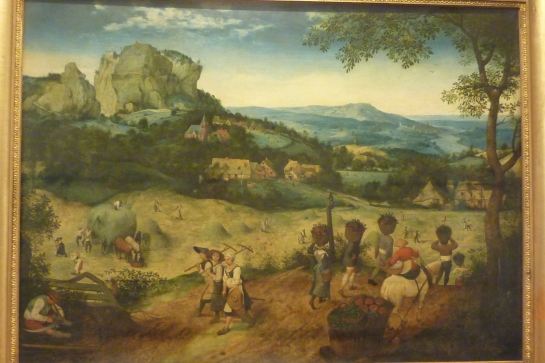
 Leaving the museum-palace, we pass some other beautiful views, like this gate to the plaything museum, but I’m leaving you here before you get too tired. The last part of my Prague posts is still to come.
Leaving the museum-palace, we pass some other beautiful views, like this gate to the plaything museum, but I’m leaving you here before you get too tired. The last part of my Prague posts is still to come.










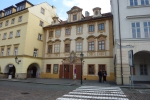





















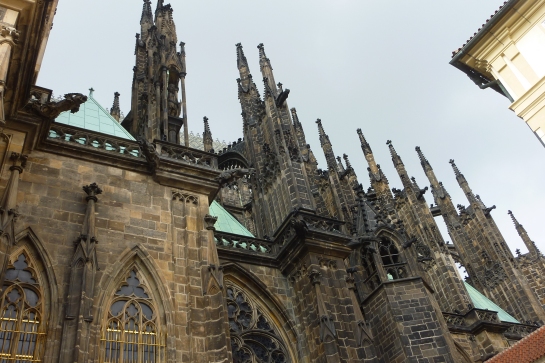







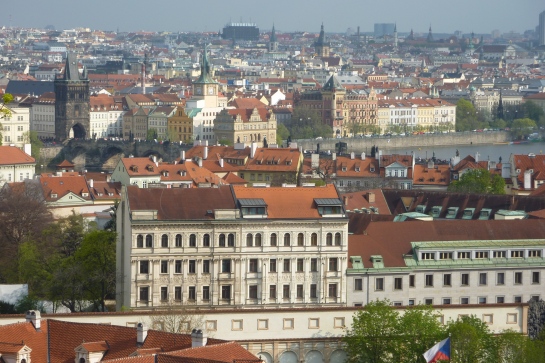
 and a very nice, working windmill, which can be visited inside
and a very nice, working windmill, which can be visited inside and some of the very nicest boat houses I’ve ever seen
and some of the very nicest boat houses I’ve ever seen The town looks otherwise very pretty too
The town looks otherwise very pretty too  but the main attraction is surely the castle, which is, oddly enough, rarely accessible to the public. It is usually rented out for events and, in between, it is closed. It is one rare ruin, as most castles are in good conditions and are occupied, or almost disappeared. But this one has one tower intact, another partially intact and walls almost completely ruined but with enough to give one an idea.
but the main attraction is surely the castle, which is, oddly enough, rarely accessible to the public. It is usually rented out for events and, in between, it is closed. It is one rare ruin, as most castles are in good conditions and are occupied, or almost disappeared. But this one has one tower intact, another partially intact and walls almost completely ruined but with enough to give one an idea.

 However, I was lucky enough to arrive on a day when there was no big event but a nice little concert in the garden, and so the towers were open. It’s completely free to look inside and you can have a feeling of how small feast are catered for.
However, I was lucky enough to arrive on a day when there was no big event but a nice little concert in the garden, and so the towers were open. It’s completely free to look inside and you can have a feeling of how small feast are catered for. 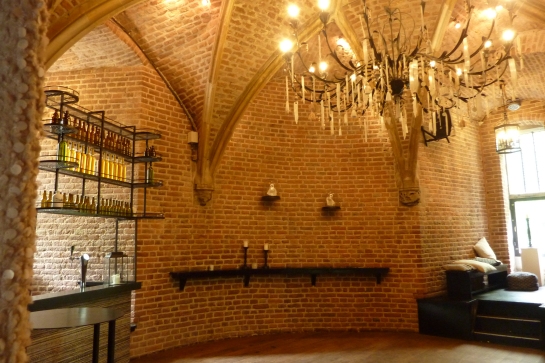 From above, the view is really nice over the restaurant and the moat
From above, the view is really nice over the restaurant and the moat the other tower, where I didn’t enter for the small exhibition
the other tower, where I didn’t enter for the small exhibition and over the town
and over the town Here is a song from the concert under the tent, with people enjoying the atmosphere, some snacks and drinks.
Here is a song from the concert under the tent, with people enjoying the atmosphere, some snacks and drinks.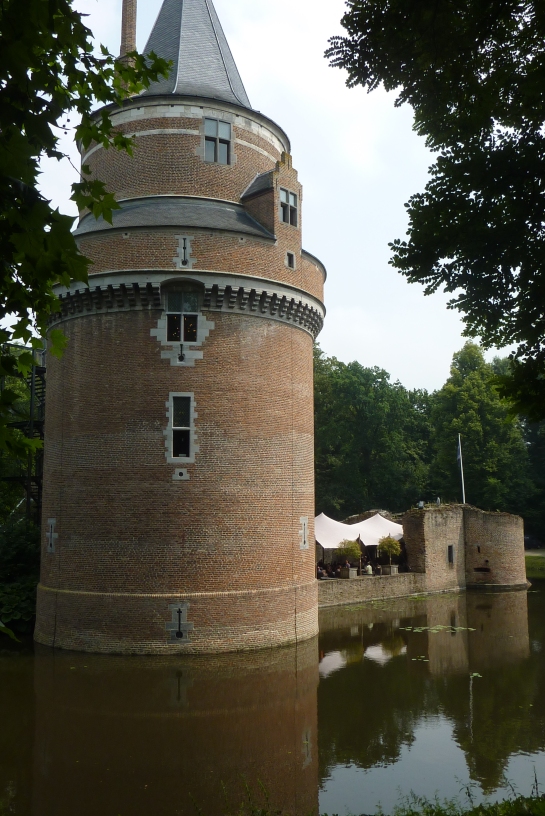 After such a pleasant place I rode further to Huis Doorn, which was the last dwelling place of the German Kaiser in the Netherlands after WWI. The entrance is next to the road, can’t be mistaken
After such a pleasant place I rode further to Huis Doorn, which was the last dwelling place of the German Kaiser in the Netherlands after WWI. The entrance is next to the road, can’t be mistaken and the park around the house is really huge, complete with an Orangery and various romantic routes. The house, however, is a real let-down, not only because of its puritanic structure, which soon reveals that, other than the front side, it is nothing special at all.
and the park around the house is really huge, complete with an Orangery and various romantic routes. The house, however, is a real let-down, not only because of its puritanic structure, which soon reveals that, other than the front side, it is nothing special at all.
 The real disappointment is that, for the orbital price of €12, one could only see a few rooms furnished as in the few years of the Kaiser’s stay, relics of the emperor and practically nothing else. I decided not to enter but have a drink in the restaurant. Still, a nice day.
The real disappointment is that, for the orbital price of €12, one could only see a few rooms furnished as in the few years of the Kaiser’s stay, relics of the emperor and practically nothing else. I decided not to enter but have a drink in the restaurant. Still, a nice day. If somebody cycles this far, the nearest railway station is at Driebergen/Zeist, which means that the route can be pedalled through backwards starting there.
If somebody cycles this far, the nearest railway station is at Driebergen/Zeist, which means that the route can be pedalled through backwards starting there. I arrived in Prague on a kind of professional project in the middle of April and landed in an out-of-the-way, cheap hotel in this street, near the railway station, which was, however, situated at a very ample place to travel around this charming city easily. And, business done, this is what I did.
I arrived in Prague on a kind of professional project in the middle of April and landed in an out-of-the-way, cheap hotel in this street, near the railway station, which was, however, situated at a very ample place to travel around this charming city easily. And, business done, this is what I did. Food is not very cheap but not very expensive either. Sometimes, however, quality punches you in the stomach: downtown, not far from the very touristy places, I sat into a fairly expensive restaurant on this corner, chose something the waitress said was one of their fav specialities and was given this. I’m not one to get worked up about stuff especially because I was hungry but please notice the colour difference of a piece of ‘knedla’ on the left from the other ones: it was brown with
Food is not very cheap but not very expensive either. Sometimes, however, quality punches you in the stomach: downtown, not far from the very touristy places, I sat into a fairly expensive restaurant on this corner, chose something the waitress said was one of their fav specialities and was given this. I’m not one to get worked up about stuff especially because I was hungry but please notice the colour difference of a piece of ‘knedla’ on the left from the other ones: it was brown with  age. And it felt so old as it looked too. Outrageous. As to the beer to accompany a restaurant meal, it’s strangely cheaper (usually around 35-40 Kr) than a bottle in most shops. Perhaps watered up …
age. And it felt so old as it looked too. Outrageous. As to the beer to accompany a restaurant meal, it’s strangely cheaper (usually around 35-40 Kr) than a bottle in most shops. Perhaps watered up …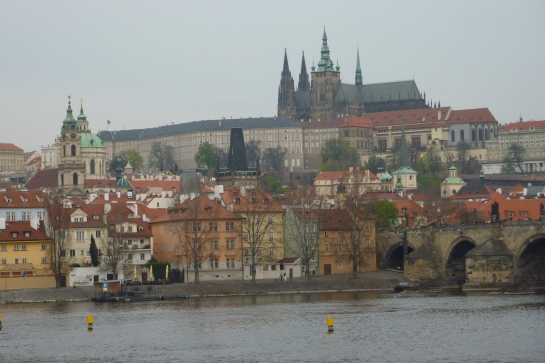
 the castle, probably the largest one on earth, Charles bridge with crowds ogling old saints
the castle, probably the largest one on earth, Charles bridge with crowds ogling old saints  or artefacts on display or sitting for a portret, and of course taking selfies in front of ages-old sculptures,
or artefacts on display or sitting for a portret, and of course taking selfies in front of ages-old sculptures,  any one of the towers
any one of the towers

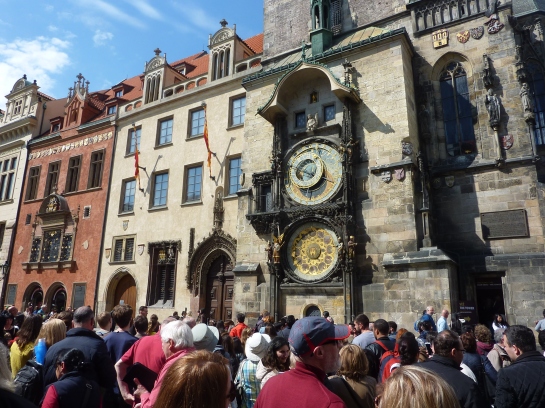 near this amazing building
near this amazing building  which, however, almost nobody cares to look at, just like this fabulous detailed gate right next to the clock.
which, however, almost nobody cares to look at, just like this fabulous detailed gate right next to the clock. Then there is the Old Square itself with the beautiful buildings and the church behind them
Then there is the Old Square itself with the beautiful buildings and the church behind them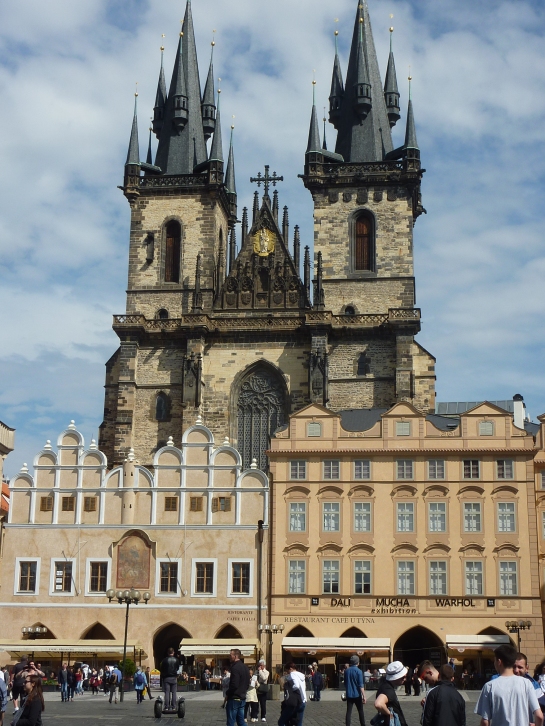
 .
. However, there are other beautiful towers around the city and other churches with even more beautiful interior than the Church of Our Lady above.
However, there are other beautiful towers around the city and other churches with even more beautiful interior than the Church of Our Lady above.

 or near Charles bridge (Karluv most)
or near Charles bridge (Karluv most) or along the river Vltava
or along the river Vltava but further away from the beaten track as well.
but further away from the beaten track as well. The buildings of and the areas around theatres and the opera house are especially nice
The buildings of and the areas around theatres and the opera house are especially nice

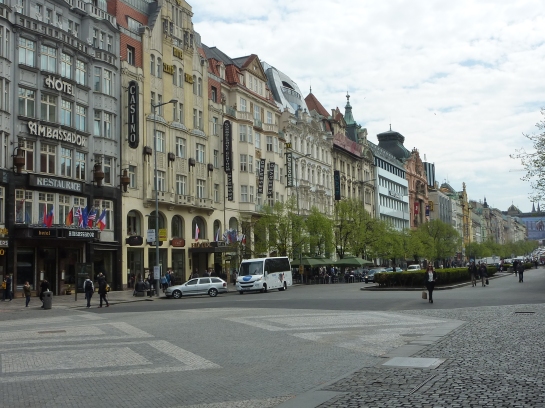


 Near here it was that I first met the first vendor of Trdelník, brashly advertized as “The Old Bohemian Speciality”…
Near here it was that I first met the first vendor of Trdelník, brashly advertized as “The Old Bohemian Speciality”… As I asked him whether he knew this is actually a delicacy from Hungary and Transylvania called “kürtős kalács”, he opened his arms saying, yeah, well, but he has to trade here … High fives! He obviously runs a far better business about it than the real original vendors in Hungary. One can only smile along with this strange figure nearby
As I asked him whether he knew this is actually a delicacy from Hungary and Transylvania called “kürtős kalács”, he opened his arms saying, yeah, well, but he has to trade here … High fives! He obviously runs a far better business about it than the real original vendors in Hungary. One can only smile along with this strange figure nearby  Here come a few more photos about theatre neighbourhoods.
Here come a few more photos about theatre neighbourhoods. 





 The National Theatre (Národní Divadlo) near the Most Legii
The National Theatre (Národní Divadlo) near the Most Legii Now that we are back to the river, we should not miss the Smetana museum (on the right side here)
Now that we are back to the river, we should not miss the Smetana museum (on the right side here) 
 Next time we shall cross this beautiful bridge to the west of the river, to the castle district. Now I’m returning to the Old Square to say good bye.
Next time we shall cross this beautiful bridge to the west of the river, to the castle district. Now I’m returning to the Old Square to say good bye. 
 To the right you can imagine the row of restaurants and stalls of the lots of guides offering to hire out legions of small boats and barges for larger groups of tourists. But one has to cut the crowds out of the pictures (if at all possible) to see what the village should actually look like as habitation.
To the right you can imagine the row of restaurants and stalls of the lots of guides offering to hire out legions of small boats and barges for larger groups of tourists. But one has to cut the crowds out of the pictures (if at all possible) to see what the village should actually look like as habitation.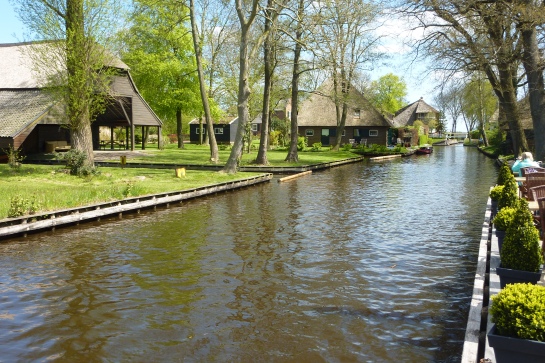 In fact there are so many tourists that it is quite impossible to avoid them any further. Miraculously, the place has become rather well-known among the Chinese so the density of Chinese people almost matches that in popular large Chinese restaurants anywhere around the Netherlands. Notices about hiring the boats and restaurant menus are in Dutch and Chinese, not in English though the odd Italian restaurant also appears as befits a mini-Venice. But quite unlike in Venice, almost all houses have thatch roofs.
In fact there are so many tourists that it is quite impossible to avoid them any further. Miraculously, the place has become rather well-known among the Chinese so the density of Chinese people almost matches that in popular large Chinese restaurants anywhere around the Netherlands. Notices about hiring the boats and restaurant menus are in Dutch and Chinese, not in English though the odd Italian restaurant also appears as befits a mini-Venice. But quite unlike in Venice, almost all houses have thatch roofs.


 The Brazilian giant rhubarb is also prevalent in the village, I’d like to see it fully grown later – it must be a spectacle.
The Brazilian giant rhubarb is also prevalent in the village, I’d like to see it fully grown later – it must be a spectacle.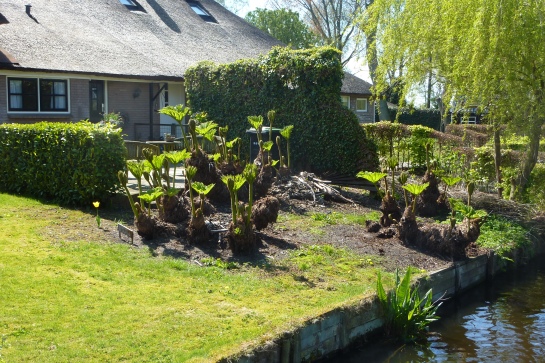


 Then, when hiring boats, some people really become dangerous – beware if you are with kids.
Then, when hiring boats, some people really become dangerous – beware if you are with kids.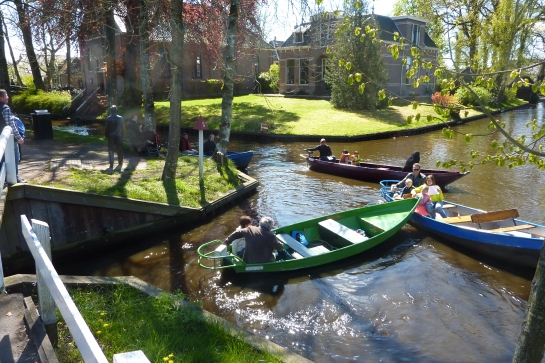
 The boats for hire are battery-operated slow boats and can be taken for one or two or three hours or even more, for which tourists get a description of the route possible for that length of time. It is by hiring for at least two hours that people can get out into the nearby lake and explore nature on a sunny day.
The boats for hire are battery-operated slow boats and can be taken for one or two or three hours or even more, for which tourists get a description of the route possible for that length of time. It is by hiring for at least two hours that people can get out into the nearby lake and explore nature on a sunny day.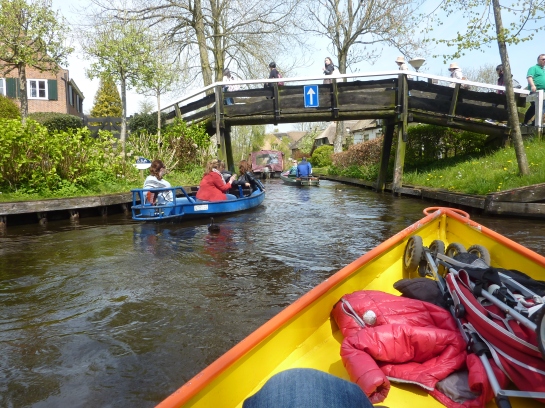



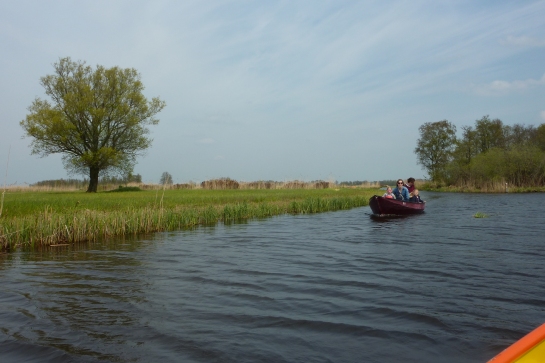
 At one point there is a look-out tower. The view from there is a nice eye-opener about the area.
At one point there is a look-out tower. The view from there is a nice eye-opener about the area.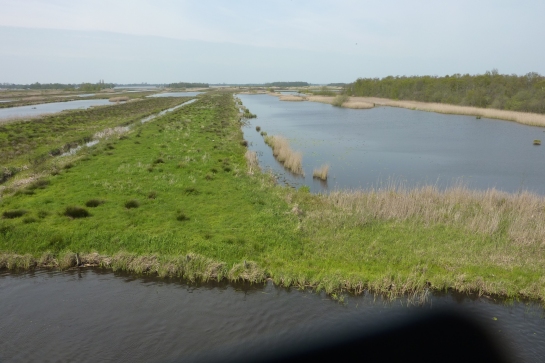 Those intent on avoiding the crowds can opt for the area called Dwarsgracht just across the road from Giethoorn. We chose a different area with kids though.
Those intent on avoiding the crowds can opt for the area called Dwarsgracht just across the road from Giethoorn. We chose a different area with kids though. The town lies at the mouth of the river IJssel, near where it flows into the IJsselmeer. Surprisingly, it is a former Hansa town with beautiful architecture, complete with a number of bigger sailing ships moored on the quay.
The town lies at the mouth of the river IJssel, near where it flows into the IJsselmeer. Surprisingly, it is a former Hansa town with beautiful architecture, complete with a number of bigger sailing ships moored on the quay.


 (Broederport)
(Broederport)



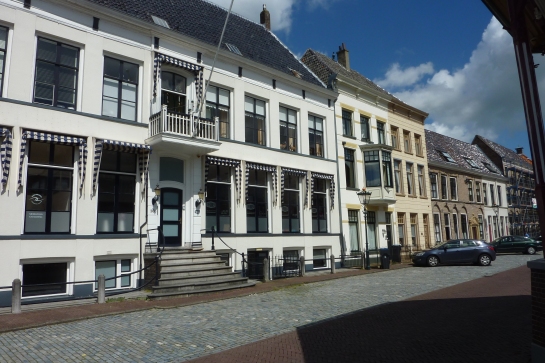
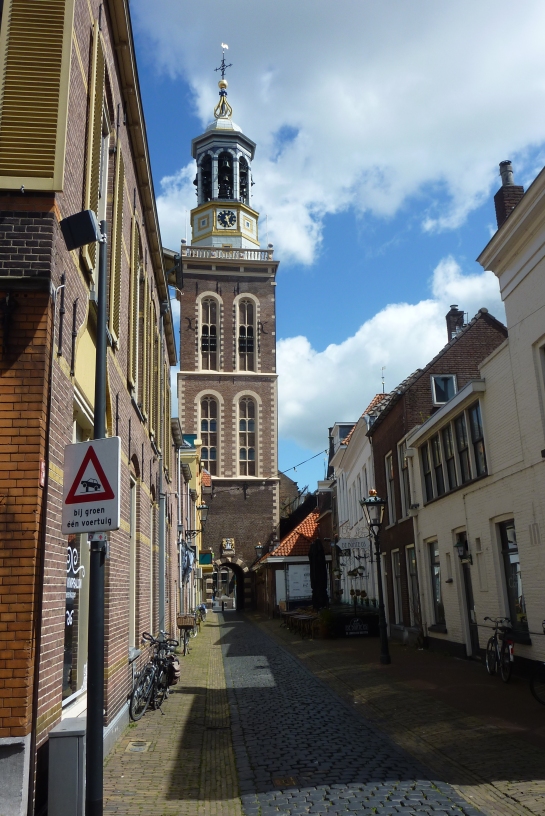
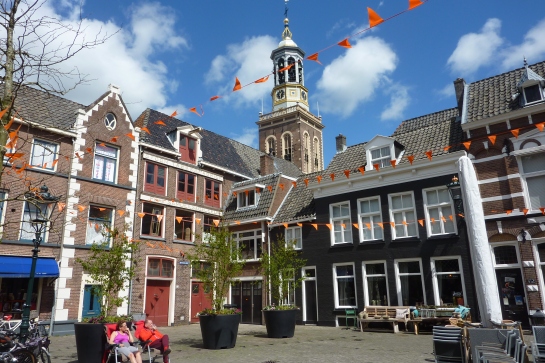










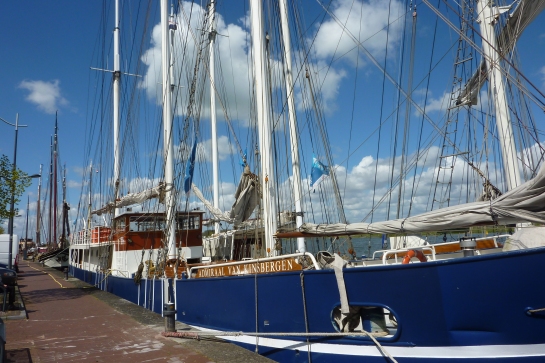
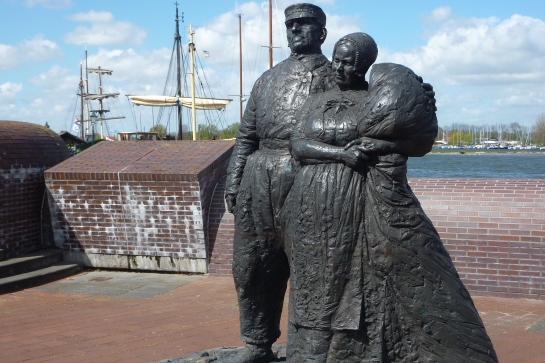 (Memorial to the Schrokkers, fishermen who were re-housed to Kampen when the island Schokland in the Zuidersee was evacuated)
(Memorial to the Schrokkers, fishermen who were re-housed to Kampen when the island Schokland in the Zuidersee was evacuated) (No bikes here!)
(No bikes here!)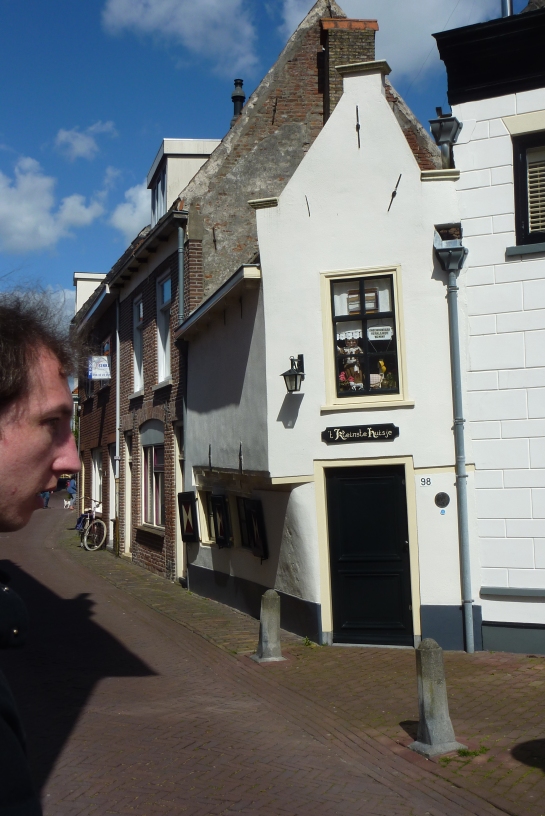 (the smallest house – in the Netherlands? here in Kampen for sure)
(the smallest house – in the Netherlands? here in Kampen for sure)

















































 Amerongen is situated in the heart of the Netherlands, on the border of the Province of Utrecht with Gelderland. It is easy to approach by car, but without a car, one has to take the train to Utrecht, or Veenendaal-De Klomp, and cycle from one of them. I chose De Klomp, so I cycled across Veenendaal, then kilometers of beautiful autumnal forests of Het Amerongse Bos, one of the oldest forests in Utrecht, which goes back to 1770.
Amerongen is situated in the heart of the Netherlands, on the border of the Province of Utrecht with Gelderland. It is easy to approach by car, but without a car, one has to take the train to Utrecht, or Veenendaal-De Klomp, and cycle from one of them. I chose De Klomp, so I cycled across Veenendaal, then kilometers of beautiful autumnal forests of Het Amerongse Bos, one of the oldest forests in Utrecht, which goes back to 1770. 
 The Kasteel is actually no castle at all in the classical sense. Though it was build about 700 years ago, the French burned it to the ground in 1673 after the owners failed to pay the required fire tax. As a result of the rebuilding by the owners not much later, the present palace is a Dutch classicist ‘Huys’, as they often also call it.
The Kasteel is actually no castle at all in the classical sense. Though it was build about 700 years ago, the French burned it to the ground in 1673 after the owners failed to pay the required fire tax. As a result of the rebuilding by the owners not much later, the present palace is a Dutch classicist ‘Huys’, as they often also call it.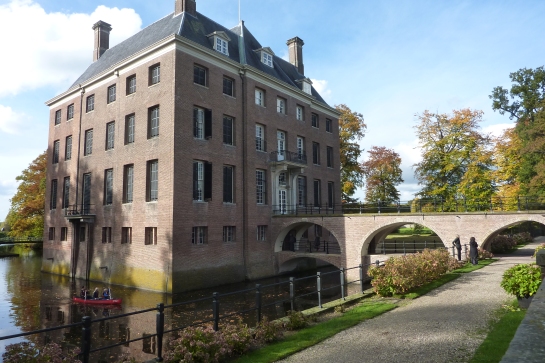 It lies on a large area of 10 ha, most of which is a beautiful park of huge trees, the rest has a charming garden (if one likes the French style) and waterways where people can rent canoes to discover it from surface level.
It lies on a large area of 10 ha, most of which is a beautiful park of huge trees, the rest has a charming garden (if one likes the French style) and waterways where people can rent canoes to discover it from surface level.


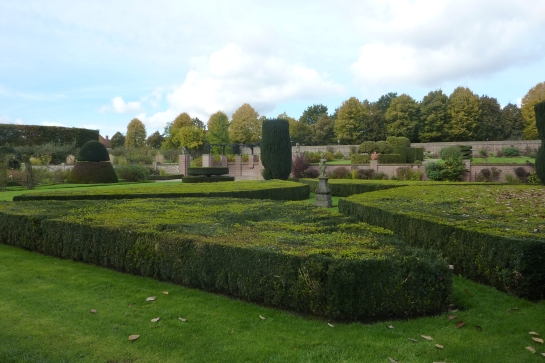
 As a building, it fails to impress but the most enthusiastic visitor. However, thanks to its history and well-preserved inside, it is worth the fee of €10, which is in fact the highest out of all castles I’ve visited so far.
As a building, it fails to impress but the most enthusiastic visitor. However, thanks to its history and well-preserved inside, it is worth the fee of €10, which is in fact the highest out of all castles I’ve visited so far.

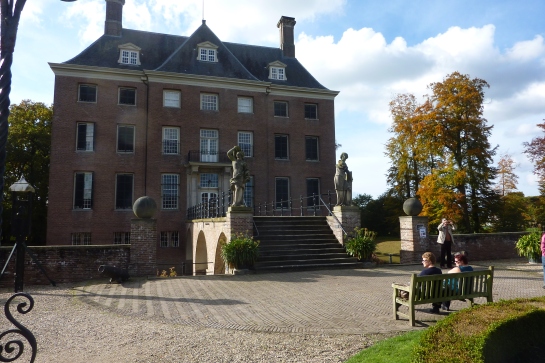
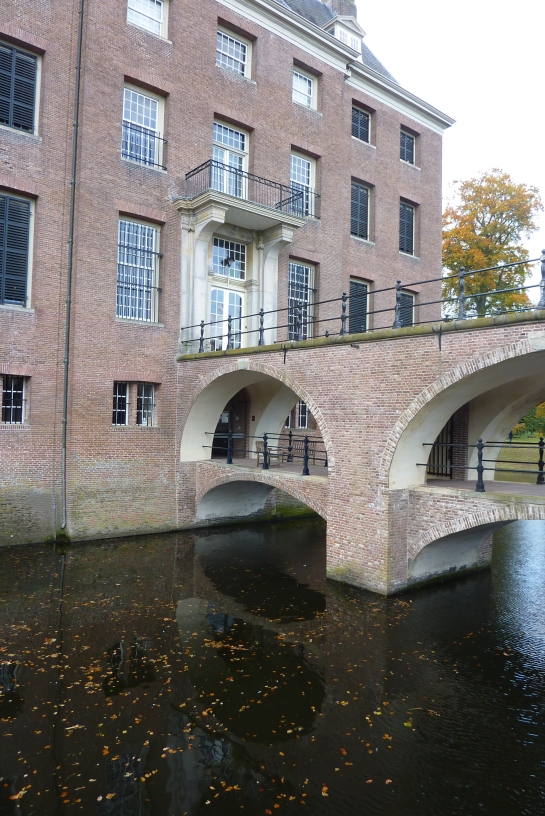 Not only were the owners high-class noblemen, but they made sure the interior is left as it was in 1977, when they gave over the estate to a foundation to open it to the public. It is thus quite likely that some of the furniture was used by the German Kaizer, Wilhelm II, when he abdicated the German throne, asked for asylum and lived here for 1.5 years from November 1918, before he moved over to nearby Huis Doorn. The interior is one of the most original a simple visitor to such places can ever find. Fortunately, one does not have to wait for guided tours either.
Not only were the owners high-class noblemen, but they made sure the interior is left as it was in 1977, when they gave over the estate to a foundation to open it to the public. It is thus quite likely that some of the furniture was used by the German Kaizer, Wilhelm II, when he abdicated the German throne, asked for asylum and lived here for 1.5 years from November 1918, before he moved over to nearby Huis Doorn. The interior is one of the most original a simple visitor to such places can ever find. Fortunately, one does not have to wait for guided tours either.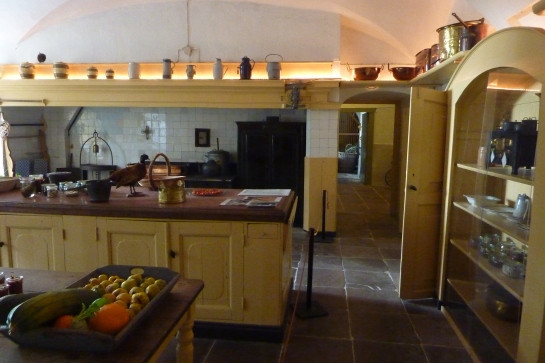




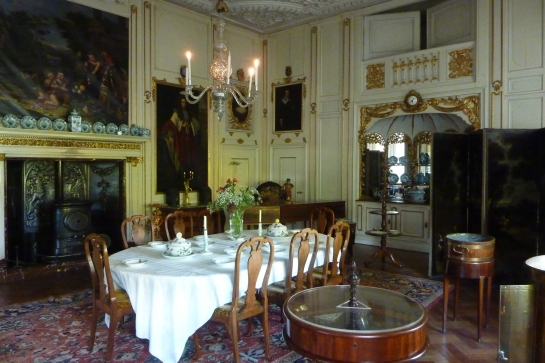


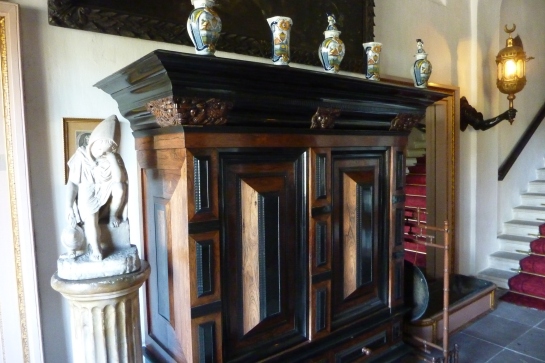
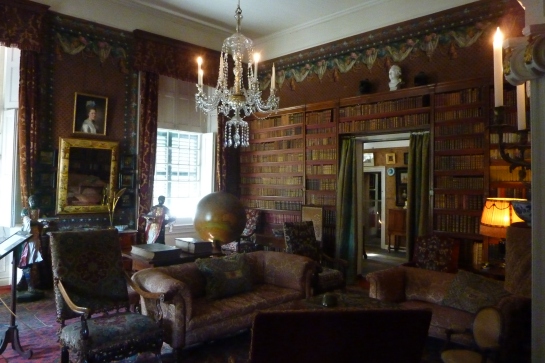
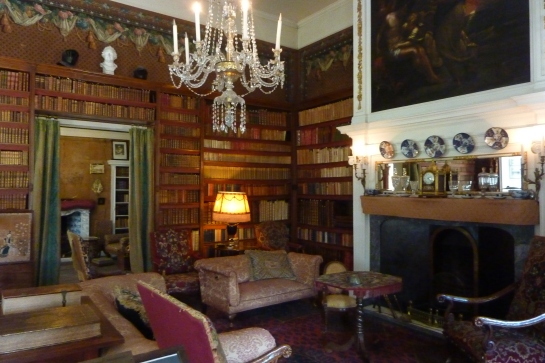





 The huge central hall upstairs is suitable for concerts by local amateur choruses, which was also taking place at the time of my visit.
The huge central hall upstairs is suitable for concerts by local amateur choruses, which was also taking place at the time of my visit.
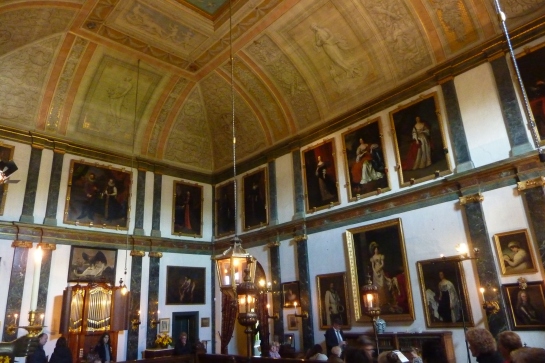


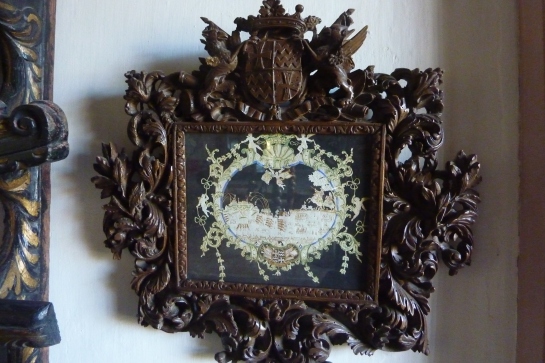 Opposite the ‘house’, the pub-restaurant is a nice place to enjoy time before or after seeing the building or the surroundings.
Opposite the ‘house’, the pub-restaurant is a nice place to enjoy time before or after seeing the building or the surroundings. From this point, the old church tower is also impressive just outside the complex.
From this point, the old church tower is also impressive just outside the complex.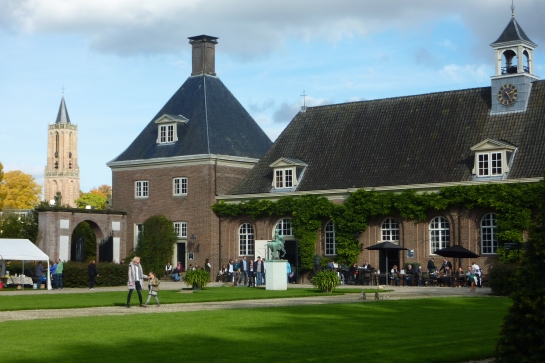
 Kasteel Amerongen is definitely a place worth visiting for its mix of history, interior and nature surrounding it.
Kasteel Amerongen is definitely a place worth visiting for its mix of history, interior and nature surrounding it.